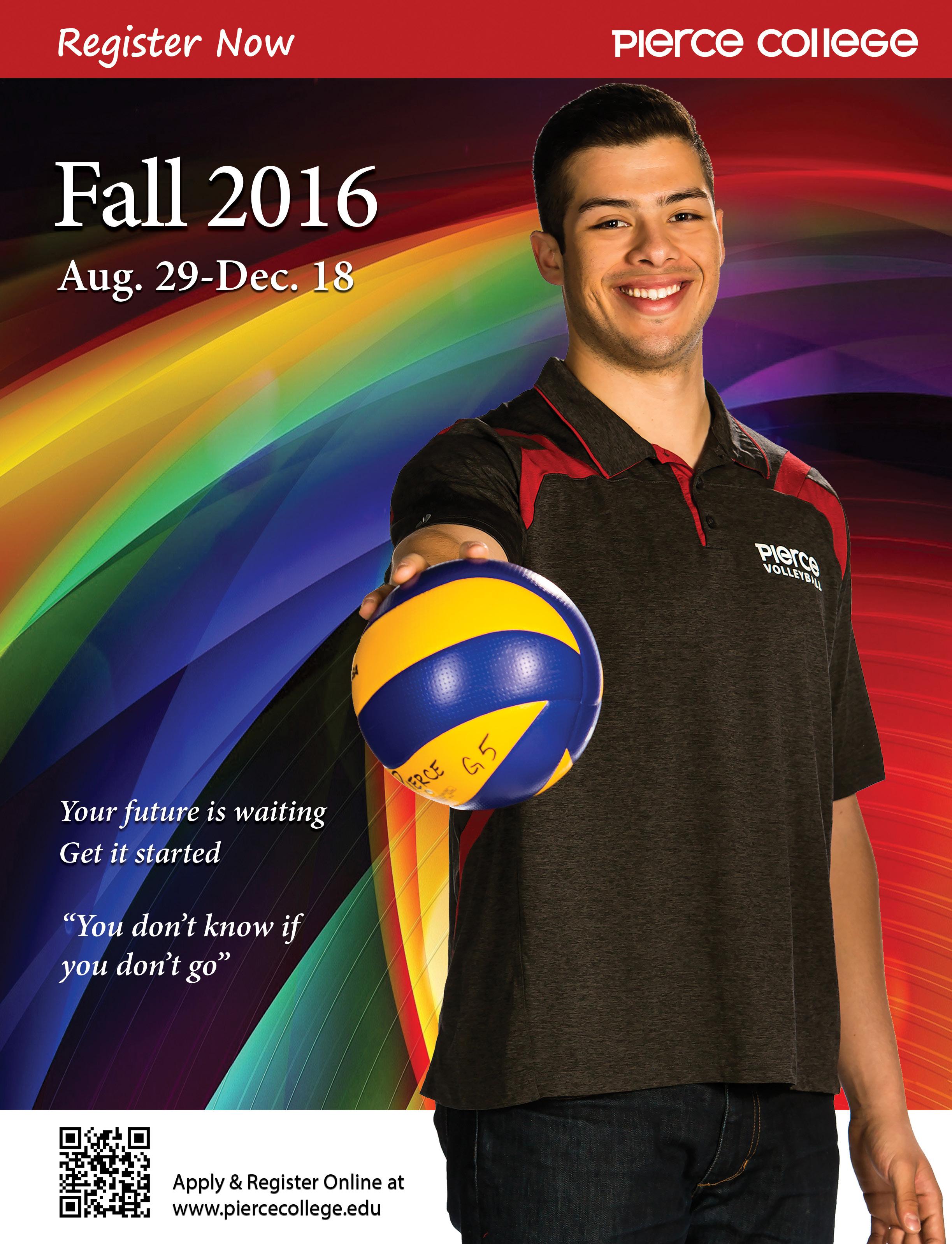Taxidermist fuses creepy with classy Life in death Life in death


Taxidermist fuses creepy with classy Life in death Life in death

Richie Zamora-Editor in Chief
A Los Angeles based journalism and photography student and freelance writer. When not taking photos or writing, he spends as much time as he can reading, visiting Dodger Stadium and backpacking through the Sierras.
Skylar Lester-Managing Editor/Photo Editor
An up and coming photographer from North Palm Beach, Florida. Her work has been published in various outlets including Seeds Literary Magazine and The Roundup Newspaper. Her photography has also been exhibited around the country in locations, such as The Morakami Museum in Delray Beach, Florida, and The Getty Museum in Los Angeles.

Ethan Roman-Copy Editor
An aspiring automotive journalist and amature everything else. He is also the most attractive member of the Pierce College Media Arts Program. He likes hikes, music and the smell of gasoline.

Joshua Duarte is a freelance photographer and takes no prisoners or shit from anyone. If he isn’t in the middle of a Charles Bukowski book he can be found in one of L.A.’s many music venues enjoying live music.

About the cover:

I wonder if one day we could get to the point where we could create an artifical, sentient being, with all of our nuances and capacities. I wonder then, if this being would itself feel the need to create.
Titus Littlejohn is a Los Angeles based performance artist and photographer. He is obsessed with music, dancing and art.

Donna Robles is an aspiring journalist and hopes to one day become a neurosurgeon. She writes stories in Tagalog online and the first book that she wrote currently has 820,000 reads.


Vanessa Arredondo is an English major at Pierce College and will probably be here for the rest of her life.
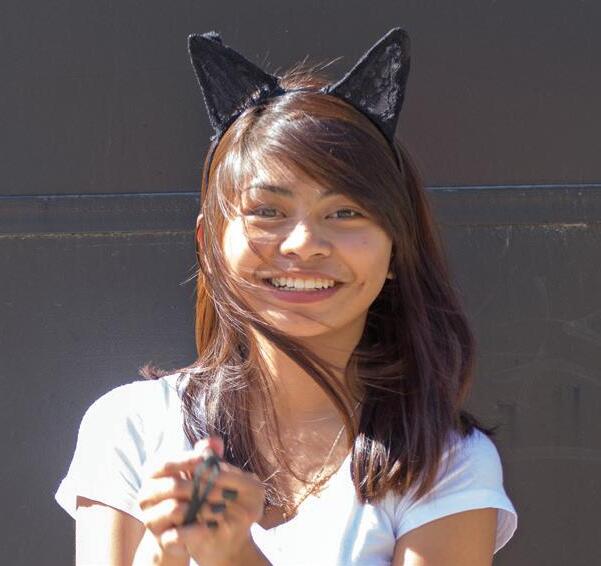
Hengame Abassi Sirchi is a writer and photographer for The Bull. She hosts a Farsi radio show on kpcradio.com that airs weekly. On the show she talks with members of the Farsi community about entertainment, news and art.

Brian Caldera is a local Los Angeles poet, comedian and writer. From parking lots to dive bars, he has performed everywhere no one wants to be.

Jonathan Hintz is a reporter for the Bull Magazine and Pierce College’s Roundup newspaper. He hopes to work as a sports writer and cover the world of entertainment.
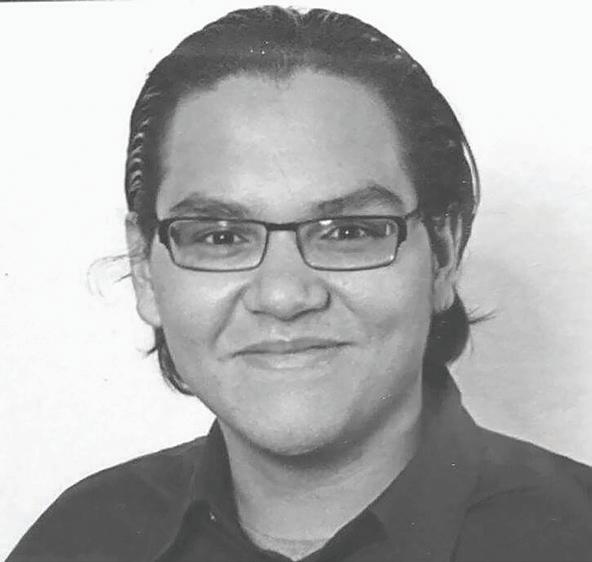
Thank you for picking up this copy of The Bull Magazine. This semester we explore the many facets of what I consider to be just about the two most important things there are-art and science. Each builds on the other in sometimes the most unexpected ways. So many devices, tools and concepts that once started out as science fiction are now very much a part of our everyday lives. Things that are thought of as impossible simply aren’t possible until we develop the right understanding and tools. The more we wonder, ask and learn, the more we push the limit of what’s possible. Magic exists in the world. It just takes a little creative thinking, and a little scientific knowhow.
Thanks the spring 2016 staff for finding these stories and for the work they’ve done to share them with you. Sincere thanks to Jill Connelly and Jeff Favre. Knowing that we had their support and trust made them a reassuring presence throughout the process. A special thanks to Melanie Crosgrove for her help in making the cover possible. Finally, thanks Skylar Lester, Calvin Alagot and Ethan Roman for the time and energy they put into these pages. Don’t stop wondering.
-Richie Zamora, Editor in Chief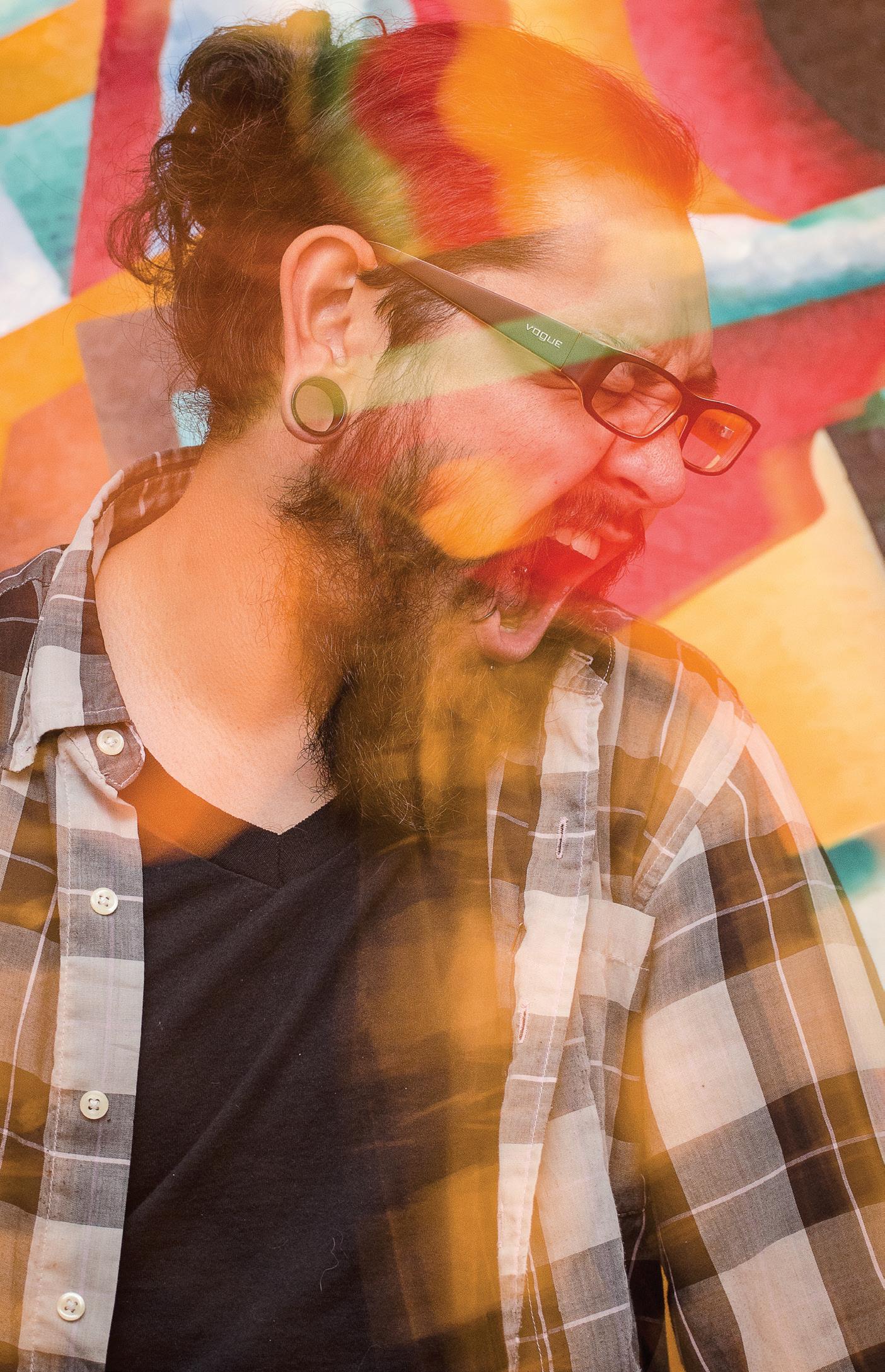
thebullmag.com
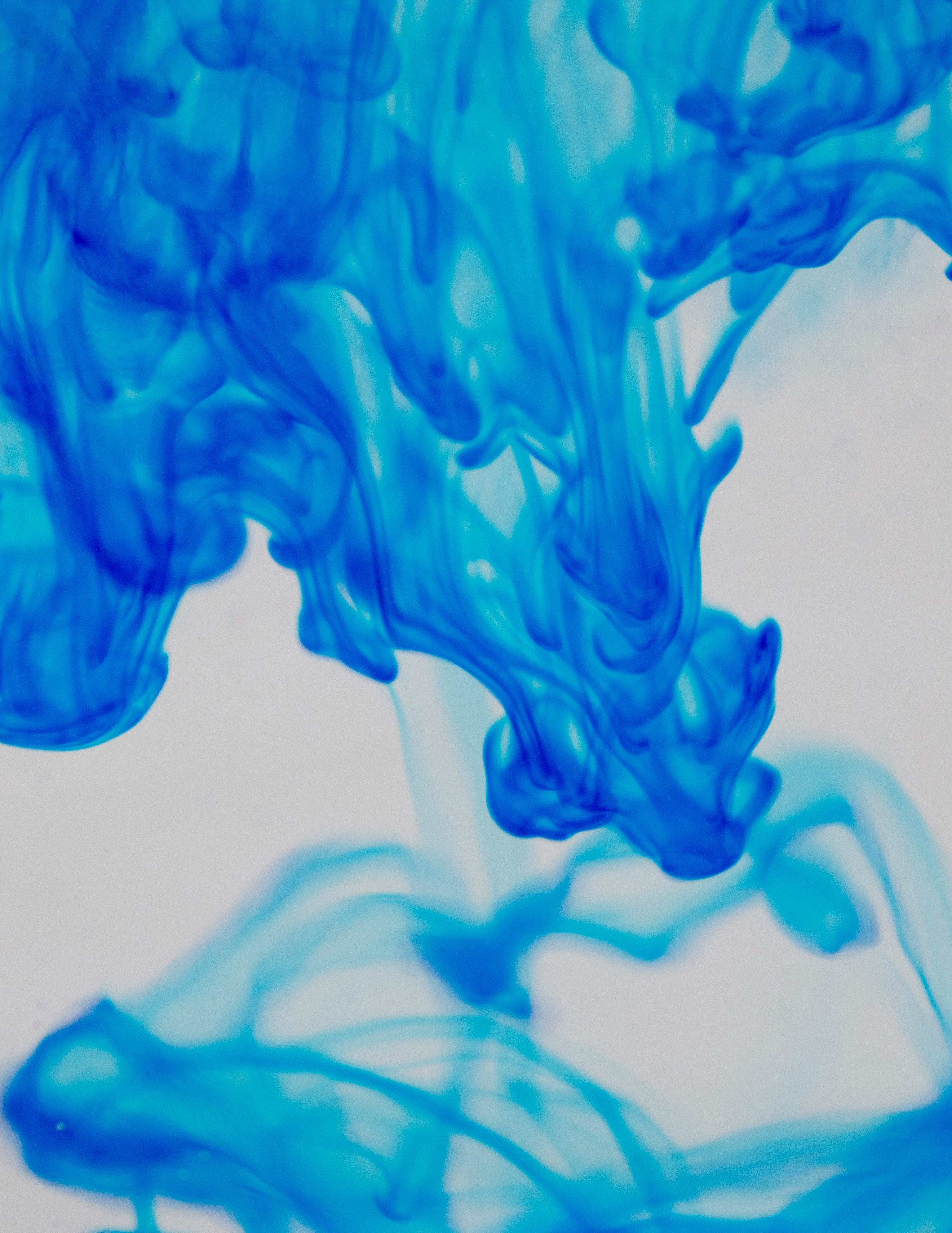

Performers push themselves and their bodies beyond belief

Judging a book by its cover, it looks like they are just playing and running around the studio while Ellie Goulding’s “On My Mind” is playing in the background. These children, wearing just their socks, leggings and tank tops, have their hair tied up, regardless if it’s nicely done, or just in a messy bun. Some of them are doing squats, while others are doing handstands against the orange and white walls of Le Petit Studio. Although it seems like they are playing, they are actually warming up and stretching, while waiting for Nathalie Gaulthier, the owner and founder of Le Petit Cirque.
Motivated by her mantra that anything is possible, Gaulthier started Le Petit Studio as an inspirational performance program in Montreal, Canada, when she was 14 years old. It was in 2001 that she decided to start Le Petit Cirque. The performers from Le Petit Cirque are children from 5-to-17 years old, and each of them has a focus and specialty in circus performances. The team trains at Le Petit Studio in Inglewood, California. Le Petit Cirque performs across the country and internationally. They’re also the only circus that includes humanitarian works in its performances, and whose performers are children.
“I love inspiring audiences into ‘anything is possible’ and death defying acts. I felt there was a need for performances that were visually mind blowing, while having messages of hope, wonder and inspiration,” Gaulthier says. “I decide to train young performers because it helps the kids feel a sense of uniqueness, other than being on a soccer team or dance group. These kids are part of something very unique, which allows them to have a greater sense of self-esteem, and the fact that they are so young has upped the inspiration and wow factor with our audiences.”
As the song transitions from the first verse to the chorus, two young artists jump. The palms of their hands are touching their heels in midair, and then they land in a split formation. An artist in the background is climbing a rope with her legs widely spread and balanced, while another artist, an aerialist, climbs a sky blue silk cloth.
On the other side of the studio is a group of contortionists practicing an act for a performance in Panama City, from April 29 to May 9, 2016. One of them is
13-year-old Anne Arellano. She started as an aerialist until she realized that she is more flexible than the other girls.
Before she performed in the circus, Arellano was what she calls “an average kid” who tried joining soccer and softball teams. However, she did not like sports.
“At first, I just wanted to do it because it was fun, and it was before I started getting really into circus, so I didn’t have a lot of things in my schedule. But then it became something that I wanted to do and it became more and more often,” Arellano says.
According to Arellano, many people she knows have warned her about the danger of what she does.
“They told me I might fall, break a leg or break all my bones. Falling and a drop are my biggest fears each time I perform. Also breaking my arm, because then I can’t do anything,” she says.
Gaulthier sees a different potential in Arellano.
-Anne Arellano“Anne Arellano is very strong as well as flexible, and works nonstop training at home as well. She will make it into Cirque du Soleil or overseas in legitimate circuses,” Gaulthier says.
With 10-to-15 hours of training a week in the studio, and training on her own at home, Arellano rarely gets the chance to relax, but when she does, she goes over to her friend’s house, or she does her homework.
The young artist is in eighth grade. She expects things to be harder once she goes to high school, she said. She expects to build good relationships with her teachers and friends in high school. Arellano has big plans for herself and is determined to succeed.
“For college I want to go to UCLA. I don’t want to leave to anywhere, so I want to stay here at home. ENC; that would totally be a choice. But the thing is, I’m an American, and it’s in Canada. So that
means I would really have to work hard and be successful, which I will. I will work hard,” she says.
ENC, or École Nationale de Cirque, is a professional school for performers who want to pursue circus performances as their career, or aspire to be a part of Cirque du Soleil. They can also get their degrees from ENC, according to Brown.
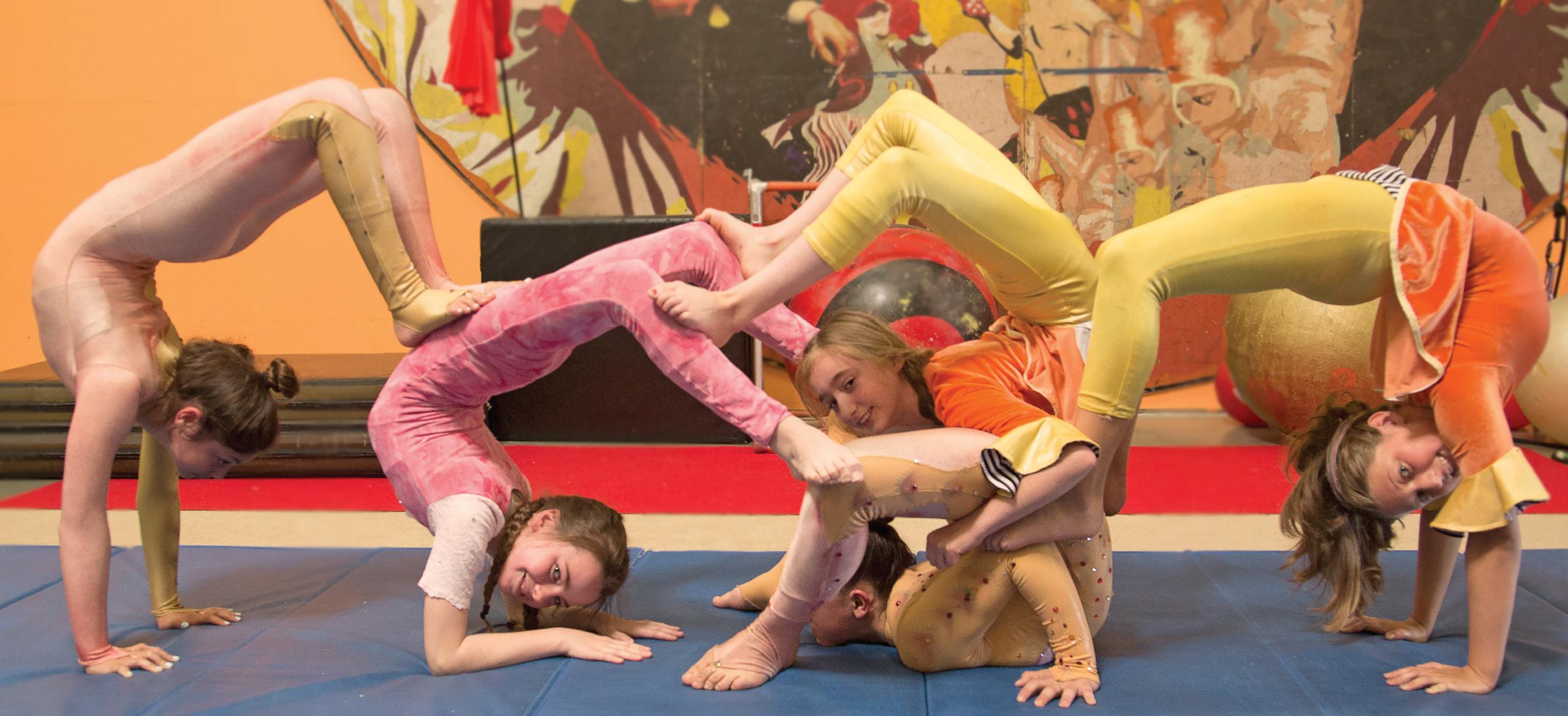
Contortion is the unexplainable flexibility of the body to the extreme. Most contortionists are trained at a young age, and most of them use this as a career. Le Petit Cirque’s young artists spend more time practicing their tricks than playing around with their friends. To maintain their flexibility, the young artists make sure that their diet is balanced and healthy.
“I never eat fast food. I barely eat out, also because I just don’t like wasting my money. I eat fairly healthy, and I drink lots of smoothies. I eat lots of fruits and chicken. I have a really bad sweet tooth, so fruits have always been my go-to sugar,” says Olivia Brown, the 23-year-old head coach of Le Petit Cirque.
Although contortion may look magical to the audience, there are also downsides to a contortionist’s flexibility. Reva Woodrow, a physical therapist at UCLA, has something to say regarding a contortionist’s health.
“Contortionists stretch the muscles, tendons and ligaments surrounding a joint [two bones meeting] beyond the typical range required to perform activities of daily living. Ligaments are tough, fibrous bands that hold two bones together. Its purpose is to keep the bones aligned and provide stability,” Woodrow wrote. “When a joint is overstretched, the ligaments are stretched as well placing the contortionist at risk of a bone popping out of alignment [dislocating]. For example, if the shoulder ligaments are overstretched, simply reaching for a seat belt can cause the bone to dislocate,” she adds.
Within three years after starting the circus, Le Petit Cirque raised more than $5 million for different organizations. According to Gaulthier, other than being the only circus who collaborates with humanitarian works, the performers are receiving school and college credits as well as community service hours. They are also fully booked until 2017, including the Panama City performance, followed by a Florida tour and a summer tour across the United States.
“They told me I might fall, break a leg, or break all my bones. Falling and a drop are my biggest fears each time I perform.”


Eric “Chaz” Czechanski is one of the only true guitar luthiers in the San Fernando Valley. Working out of his small shop in Los Angeles, Czechanski’s guitar shop is carved into the side of the same complex where the legendary Sound City once stood. He has provided, and continues to provide, a one-of-a-kind service to a clientele, both local and star-strikingly illustrious.
Since 1994, Eric’s Guitar Shop has been the location for musicians to have their gear repaired, modified or even custom built. The high quality and diversity of Eric’s work is attested to by the thankful words and signatures covering pictures of some of music’s most noteworthy and influential artists that adorn the walls of his shop. Despite the differences between musical acts like Ozzy Osbourne, Tool and Madonna, all guitar players
Story by Brian Caldera Photos by Richie Zamora Eric “Chaz” Czechanski stands in front of shelves filled with guitr cases of clients in his shop in Van Nuys, Calif. on April 27, 2016.speak highly of Eric’s services. However, despite the star power of his clientele, Eric manages to keep a calm, business-minded approach, and claims to never have been star-struck by a famous customer.
“That doesn’t mean I’m not thrilled to work on some people’s instruments that I really admire,” Czechanski quickly amends.
Although the occasional celebrity does end up visiting the shop, the sheer volume of Eric’s work can make it difficult to recall specific instruments.

Czechanski builds 30-40 guitars a year from scratch, and works on a total of 4,500 guitars and basses a year. Customers often come in and ask him for the ideal guitar, or for Eric to make their guitar to his standard, but, according to Eric, it’s all based on personal preference and what feels right to the individual.
“If you like something, that’s the right guitar for you,” says Czechanski.
In the shop, a bass player checking out Eric’s latest stock of instruments, local jazz bassist Andrew Fortin.
“Even though Eric is known as the guy who can repair a guitar from pieces of broken wood, he was still willing to help me with small bits and pieces of my gear. He took the time,” Fortin says. His shop is successful, and shows no sign of stopping as it grows each year. He works hard to maintain that level of success, and spends large amounts of time in the shop, 13-to-14 hours a day, every day, except for Sundays.
“Slow growth is always good growth,” Czechanski says. The time before the shop opens is when his passion for the job really shines through. When he is able to work randomly and consistently on anything that’s productive and keeps things organized. If he can see progress in the day, and actually accomplish a goal within a few hours, he is content.
“I might even enjoy cleaning the bathroom, as silly as that sounds. It’s 8:30 a.m. and I go in to wash my hands, or whatever, and I find myself on the floor, cleaning the bathroom floor, and I’m ok with that. I like doing thing that aren’t related to guitar repair, it’s kind of a good feeling, and it’s a distraction from what I normally do,” Czechanski says.
His plans for the future are a very humble goal which many of us can most certainly relate to. include retiring while he is still young enough to travel around the world with his family, and just take time away from the constant wood work and burdens that come with maintaining your own company.
“If you want to be successful at what you do, of course you have to work your butt off at it. You need to be organized. Have a very clear sense of what your goals are, and go for it, but you also have to be realistic,” Czechanski says.
“...You need to be organized. Have a very clear sense of what your goals are, and go for it, but you also have to be realistic.”
- Eric Czechanski
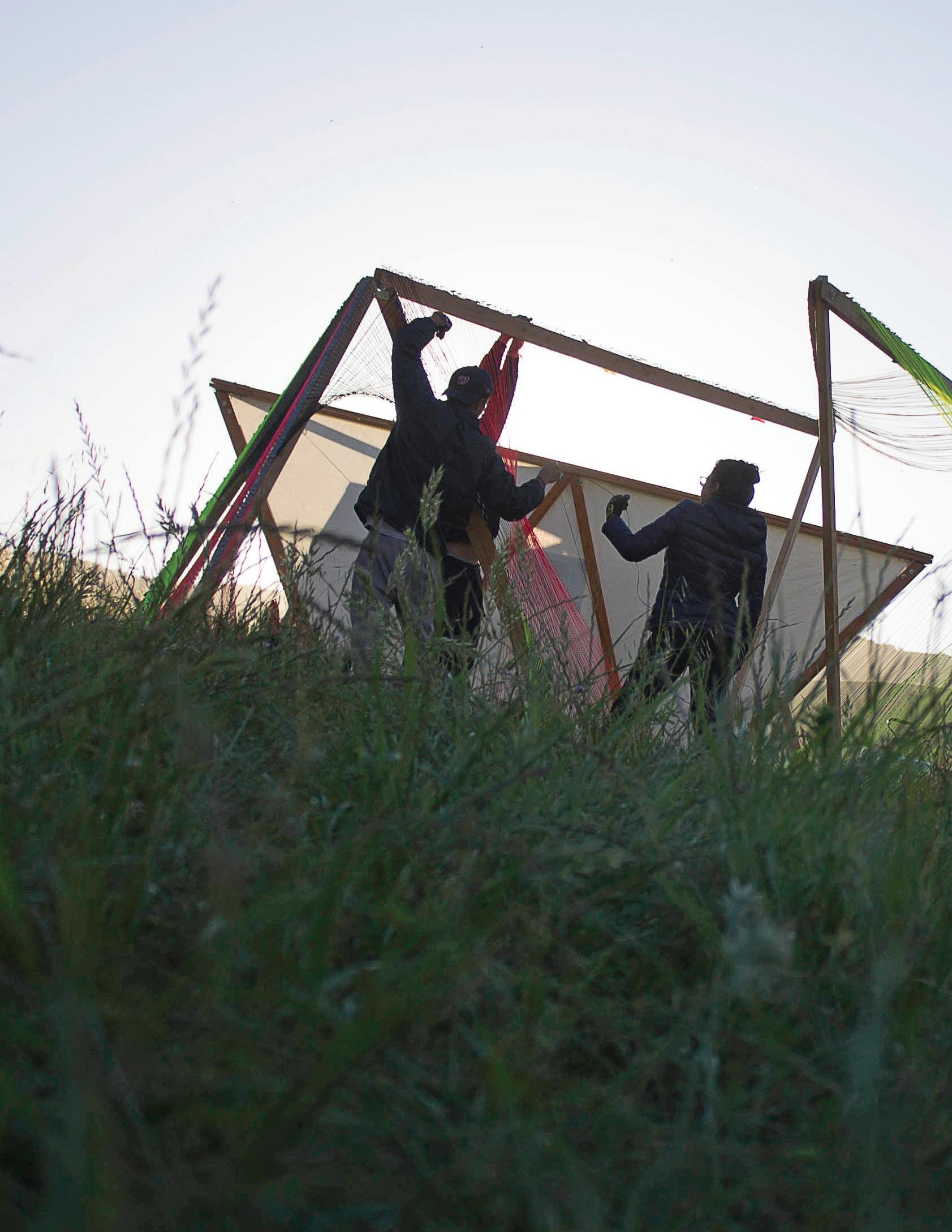
Team KJ 2 from El Camino College gets an early start at dawn on the Design Village competition at Cal Poly, San Luis Obispo on Saturday, April 16, 2016.
The sun rises on the canyon and with it comes not the sounds of birds singing but the whirring of drills. Hammering echoes over the hills that are covered in grasses nearly waist high in some spots. A breeze caresses the curves of the hill and causes the grass to wave lackadaisically in cool of this early Saturday morning. The continuing of construction interrupts the tranquility that usually falls over the area on day two of California Polytechnic State University’s Design Village competition.
Architecture schools from all over California are participating in an annual competition in San Luis Obispo to test their designs and construction abilities as well their teamwork when teams spend two nights in a shelter they set up after hiking a mile. This is Pierce College’s first year participating, and students are excited to see what they can pull off.

Xenia Bran is the president of the Pierce College Architecture and Design club. She likes the idea of incorporating architecture into the environment.
“The core of the competition is sustainability, so basically we have to design a structure that we can carry uphill for a mile,” Bran says. “We have to be really conscience of the damage that we have on the environment and I don’t think a lot of people focus on that.”
Bran has always been interested in architecture and remembers the “Brady Bunch” as one of the sources for her passion.
“On the show the “Brady Bunch,” it always fascinated me how Mike Brady would sit at the table and do his blueprints,” Bran says. “And that particular house that the Brady Bunch lived in always caught my attention. As a kid I would draw these futuristic buildings.”
Associate Professor Beth Abels teaches in the Art and Architecture department. She describes the requirements that will be placed on the teams participating and says that as an architecture event the design of the structure is just as important as its functionality.
“Students have to build a structure that they can sleep in for two nights with up to six people and a minimum of two. They have to stay there all of Friday and Saturday night. They have to walk a mile to carry their materials up and build it on site,” Abels says. “It basically has to be lightweight, it has to be small enough and easy enough to put together for students once they get up there and it has to be aesthetically thought out and
well-designed because it’s an architecture school that’s holding the competition.”
The creation process will also involve incorporating the theme of an Aura, which has been chosen by the event.
might look like and how it might address that concept.”
Bran knows that when it comes to group efforts the help of having a team can also lead to difficulties.
“The thing that has been most difficult right now is getting everybody to meet on the same day because all of us work and all of us come to school,” Bran says. “As far as the building of it, I’m really confident. The people on my team, we’ve worked together before on the open road project so the dynamic, respect and the honesty is there.”
“We have three or four groups that are working. And each one has a different process, but my suggestion to them was that they start by researching and looking around and seeing what other people have done. The SLO came up with Aura as the name of the project so they have to think about what that means for them,” Abels says. “What is an aura and do that kind of research and then come up with a concept and start to think about what that three dimensional form
Bran anticipates transporting the materials to the build site will prove to be a challenge.
“I think we’re going to be in for a surprise as far as like hauling the materials and finding out if our location is going to be flat or if it’s going to be on a slope,” Bran says. “But I think that the design should incorporate an element from everybody. Then I think we can all walk away satisfied.”
The design the group ended up using includes lightweight, water proof fabric with a zipper to create an entrance.

- Bardia Shafiei
“The second we stepped in here we started getting all these new ideas...”Xenia Bran, Monolo Martinez, Seyedeh Najmeh Sajjadian and Bardia Shafiei make up team Picasso Blue from Pierce College at the Design Village competition in San Luis Obispo, Calif. on Saturday, April 16, 2016.
“Of the designs we came up with I feel this has elements of each of our original sketch models, but it’s a lot more interesting than just regular flat walls. We used lightweight MDF, a waterproof fabric that we got from Downtown L.A. in the fabric district. ”
The DYI culture has inspired people to take matters into their own hands when it comes to consumerism. There is a new pride that comes not from the band of your shoes or the name on your label but from your own accomplishment.
Pierce is one of 19 schools participating in the competition. Other schools in attendance inclu Long Beach City College, Allan Hancock and El Camino College. Diablo Valley College’s team Ascension won the Best Craftsmanship this year.

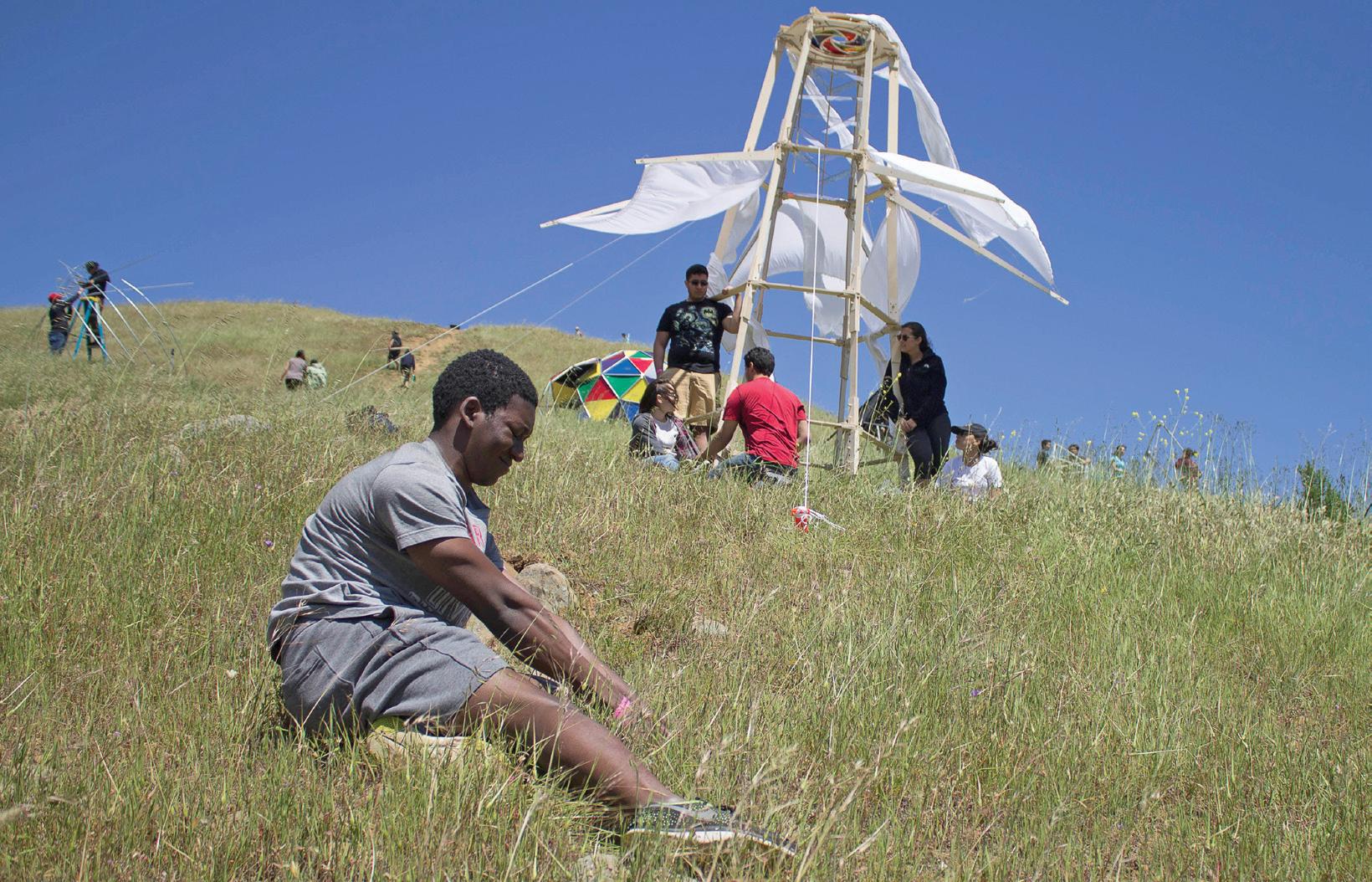
After the announcment of the winner Bardia Shafiei shared his final thoughts
“The process was fun it’s a new experience because it was the first time for Pierce College,” Shafiei says.“We started getting all these new ideas of what we could work on better and improve. I know we didn’t win any awards but I don’t feel sad. There are students who want to do this again. I’m pretty sure we’re going to be here next year and I look forward to that.”
Looking back on the experience Bran takes inspriation and hope for next semester.
“I can’t wait to come back I think all four teams from Pierce are winners because this is our first time and everyone came through and pulled their weight.”
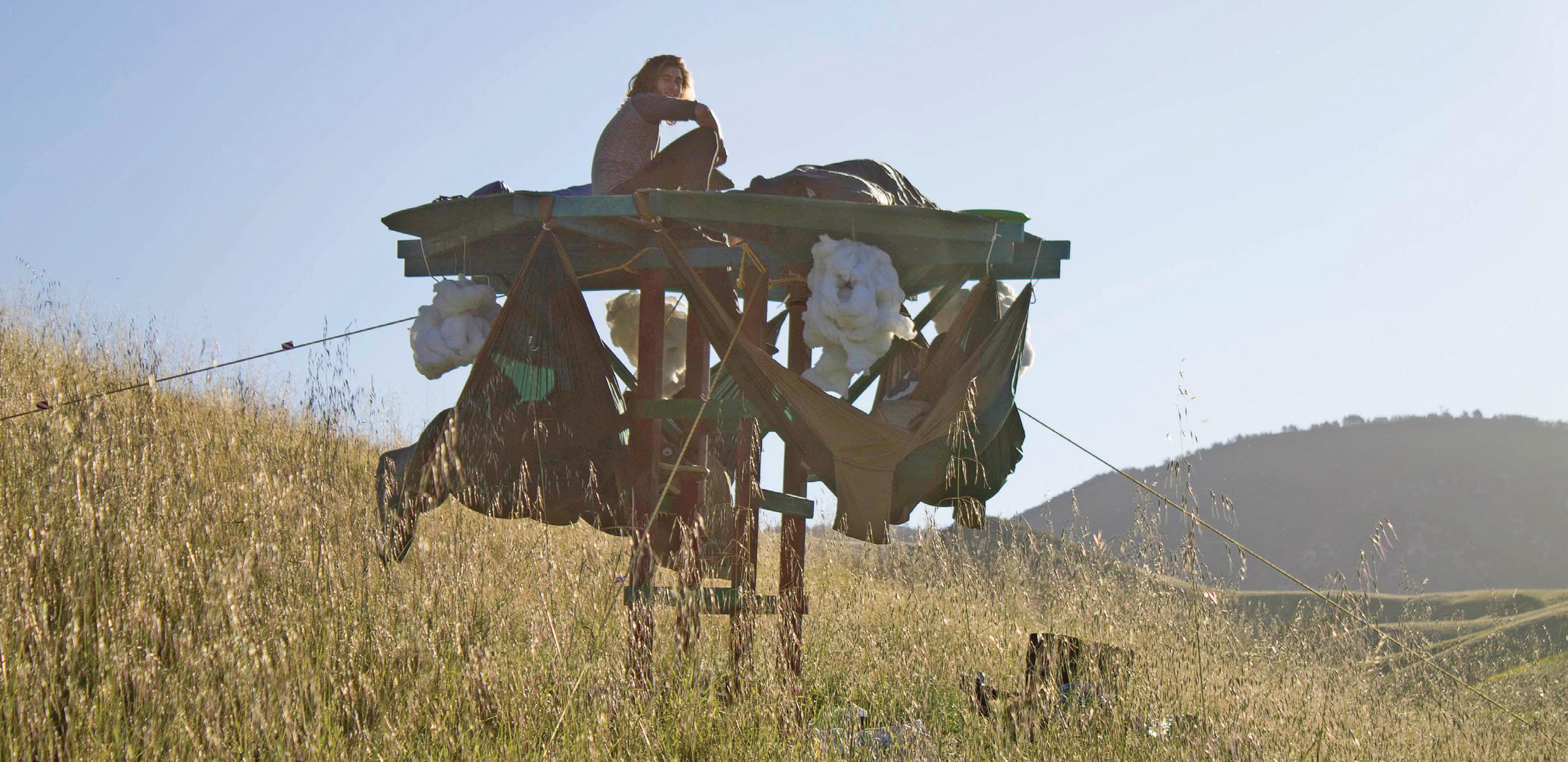 Elias Brookshire welcomes the morning on day two of the Design Village competition at Cal Poly, San Luis Obispo on Saturday, April 16, 2016.
Team KJ 2 from El Camino College in the Design Village competition at Cal Poly, San Luis Obispo on Saturday, April 16, 2016.
Deoa Mutomb and team Lumos from Diablo Valley College anchor their structure against winds at the competition in San Luis Obispo on Friday, April 15, 2016.
Elias Brookshire welcomes the morning on day two of the Design Village competition at Cal Poly, San Luis Obispo on Saturday, April 16, 2016.
Team KJ 2 from El Camino College in the Design Village competition at Cal Poly, San Luis Obispo on Saturday, April 16, 2016.
Deoa Mutomb and team Lumos from Diablo Valley College anchor their structure against winds at the competition in San Luis Obispo on Friday, April 15, 2016.
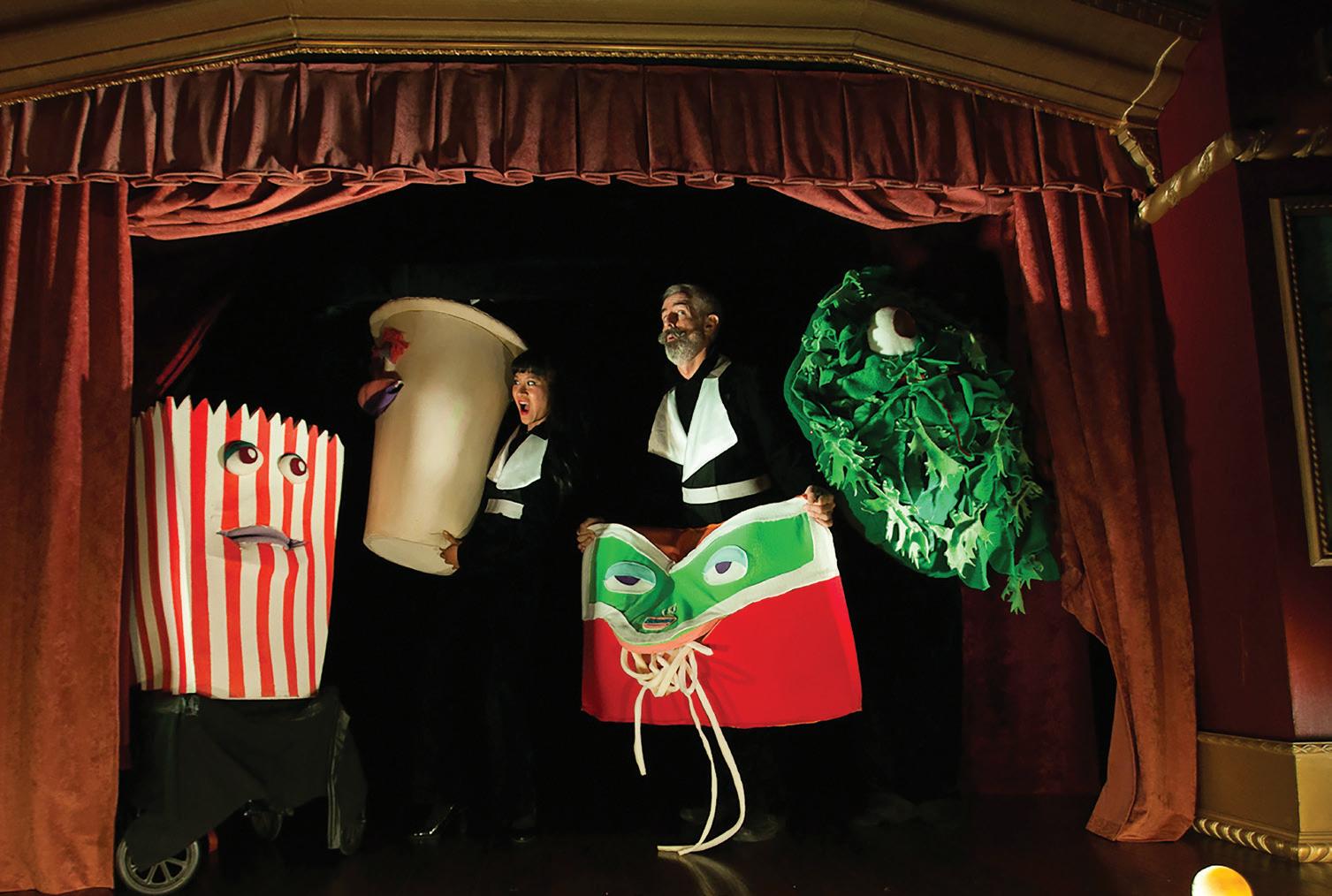
Photos by Joshua Duarte
The exterior is painted a dull red color. The outside walls, chipping, are holding large windows together. The building is more window than wall. If one were to walk by the storefront on a regular day, they might think an abandoned building was situated between a coffee shop and a film studio. But on certain days, this dusty storefront can transform into a jungle or a dance studio.
 The marquee displays the comedy event
Less Miserable that took place at the Machine Project shop in Echo Park, Calif. on April 29, 2016.
Photo provided by Machine Project
The marquee displays the comedy event
Less Miserable that took place at the Machine Project shop in Echo Park, Calif. on April 29, 2016.
Photo provided by Machine Project
Machine Project is a non-profit organization that brings together art, technology and science to educate and unite the residents of Los Angeles.
“The vision was to create a space that wasn’t just one genre. We didn’t just want to create poetry. I wanted to have a place where all different kinds of ways that people think about the world could take place in,” Executive The exterior is painted a dull red color. The outside walls, chipping, are holding large windows together. The building is more window than wall. If one were to walk by the storefront on a regular day, they might think an abandoned building was situated between a coffee shop and a film studio. But on certain days, this dusty storefront can transform into a jungle or a dance studio.
Machine Project is a non-profit organization that brings together art, technology and science to educate and unite the residents of Los Angeles.
“The vision was to create a space that wasn’t just one genre. We didn’t just want to create poetry. I wanted to have a place where all different kinds of ways that people think about the world could take place in,” Executive Director Mark Allen says. “The idea is very simple: a place for humans to come together.”
According to Associate Curator Lucas Wrench, Machine Project began as an art and science based institution, but has since become more focused on the artistic aspects of things.
“I think it’s pigeon-holed to say we are art and science based,” Wrench says. “I think we started out much more as an art and science sort of makerspace, but now our focus is more on experimental performance art. Questions of tecnology and science are fascinating and we do a lot around that, but I think, primarily, we are approaching that from an artistic point of view; an artist-first perspective.”
Machine Project has been operating in Echo Park since 2003. Allen simply walked down Alvarado Street. one day, saw the vacant space and purchased it. The location proved to be successful for their projects. He says that the area he bought the space in has always been pedestrian heavy.
“There are always people walking around the front and we get a great flux of people,” Allen says. “This neighborhood is very diverse and we get a lot of different people
coming to our shows. Part of the storefront is having the big windows, which allows people to walk by, look in and come inside.”
Unlike the nearby NoHo Arts District, Echo Park is not well known for their artistic scene. Regardless, Wrench says there are a lot of creative minds and a lot of interest in art and performance.
“Echo Park is not considered a big center for art,” Wrench says. “Sure, some galleries opened up a few years back, but I think it’s nice to be away from that. We can do our own thing here, and not have to stay in dialogue with what’s happening with the rest of the city.”
ects, he says.
Machine Project partnered with George Chen, who had previously been working on experimental comedy shows in the Bay Area. He recently moved to Los Angeles and was connected with Machine Project through a mutual friend.
“I heard about Machine Project for years from different people in the art scene. It has a good reputation in the art world,” Chen says. “It’s very established because I know a lot of people in the Bay Area and throughout California know about it. It’s a good space for experimental performances. It just had a very familiar feeling.”
Chen organized “Less Miserable: A Mystery Theater Comedy Show” on April 29. The show included stand-up and musical performances from comedians based in the Bay and the L.A. area.
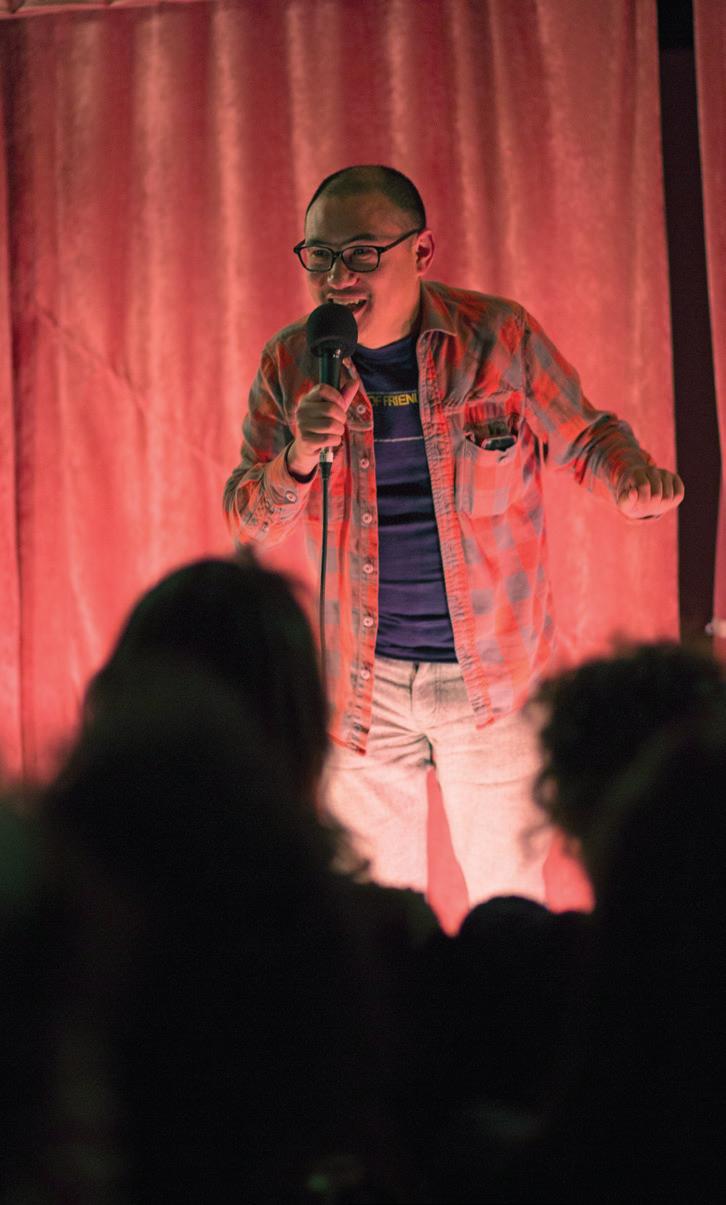
Machine Project hosts live performances in its small basement theater. However, these comedy and drama shows are not your runof-the-mill performances.
Throughout the years, Machine Project has partnered with different organizations and independent artists to produce on and off site events, projects and performances.
“The scientists, artists and engineers who partner with us are the people who have an idea, but do not have the venue to present it,” Allen says. “We also collaborate with museums and parks. It’s usually organizations interested in experimenting, but who wish to do it externally.”
As an independent and informal organization, Machine Project has the freedom to focus its projects and partnerships on the strange and alternative forms of artistic expression.
“We sort of get to masquerade as a serious institution when really it’s loose and a bit disorganized, for the most part,” Wrench says. “I think we have this ability to try things out with a certain level of visibility that hopefully has some influence on more formal institutions, and then that creates leeway for them to do more experimental work as well.”
According to Wrench, Machine Project is valuable to the arts community because of its uniqueness. Locally and outside the county, Machine Project has recognition and respect for its programming. It’s a known place to go to if people want to see interesting proj-
“Our tastes are kind of eccentric. It’s looking for things that are less obvious in the culture,” Allen says. “We are a complex organization that does many different things, so how do we communicate that to the world?
“We like to experience the strange, show that strangeness to the community and make it our normal.”
“We like to experience the strange, show that strangeness to the community and make it our normal.”
-Mark Allen
Collections from ancient cultures come to light at the Getty Villa in Malibu, California
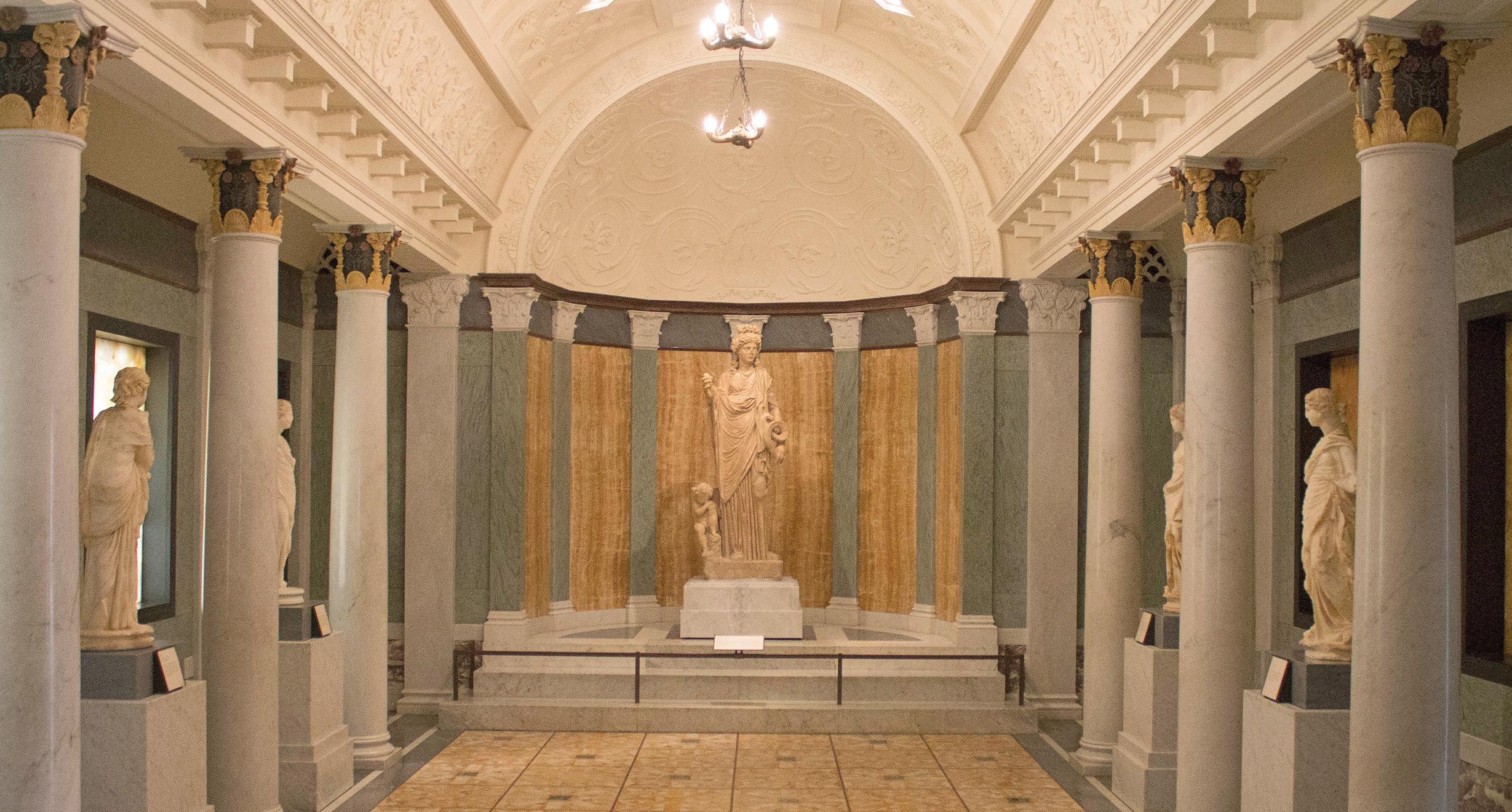
 Story by Jonathan Hintz
Story by Jonathan Hintz
Top: Statues of the gods adorn one of the more elaborate halls at the Getty Villa in Malibu, Calif. Photo by Richie Zamora
Top Left: Adam and Barbara Katz examine a map of the Getty Villa while sitting in the outdoor theater. Photo by Skylar Lester

Bottom Left: Statues can be viewed in the Outer Peristyle Garden at the Getty Villa. Photo by Skylar Lester
Far Right: Visitors explore the Herb Garden at the Getty Villa in Malibu, Calif. Photo by Skylar Lester

Opened to the public from his ranch house in Malibu, California, in 1954, JeanPaul Getty displayed art pieces that fascinated him, that he had been collecting since the early1930’s.
Getty began collecting hundreds of antiquities starting with European paintings, furniture, 18th century tapestries, silver and a 16th century Persian carpet. In 1968, he became interested in collecting statues from the ancient Greek and Roman times. A statue of Hercules was his favorite piece, so much so that it currently has its own room in the Villa.

When Getty realized he was running out of room, he built a second museum, The Getty Villa, on property down the hill from the first museum. This second addition was built to hold the art of his new collection pieces from ancient Greek and Roman times, which he became fascinated with in 1968. The Villa was opened to the public in 1974. Currently, the museum has 44,000 pieces of Greek and Roman antiquities dating back from 6,500 B.C. to 400 A.D.
Even though Getty had a major role in the plans and construction of the Villa, he never saw it finished. He died of heart failure at his home in England in 1976.
Both the Getty Center and Getty Villa will be expanding the museum by creating a room that is solely dedicated to Getty himself. The display will have some artifacts that belonged to Getty, but will mostly be a multi-media display with photos and videos that will tell the story of his life. It will also allow the public to learn about the growth of his collection, and the beginnings of both museums. The display will be opened to the public in the summer of 2016.
The Villa’s Department of Antiquities curator, Kenneth Lapatin, has worked for the museum for 15 years.
“Over the years we have acquired some antiquities ourselves, but much of these pieces were owned by Getty,” Lapatin says.
Each antiquity ranges in price. Like everything else on the market, the pieces vary depending on how rare the material is. Art collectors would pay several million dollars for bronze antiquities because they are so rare.
“Each piece varies in value,” Lapatin said. “It depends on the market, and the competition from buyers for them.”
Senior Communication Specialist Desiree Zenowich describes how the statues
were preserved and protected from natural disasters.
Lapatin said. “Some of them were funerary markers, some were offerings to one of the gods asking for favor, some of them were decorative markers so they served different functions on a case by case basis.”
When walking in the room people notice the sky god Zeus sitting in the middle of it surrounded by busts of the other gods and goddesses in front of a bluish-grey backdrop representing the sky.
On the left side of the doorway, facing Zeus from across the room, a bust of Athena can be seen by the visitors of the museum.
“We have taken precautions to keep the antiquities safe in case an earthquake should occur by bolting the the displays on miniature trolleys with springs on them so the antiquities wouldn’t fall,” Zenowich says.” The trolleys would sway and move when an earthquake would happen, but the bolts would keep the displays in place on them so they wouldn’t fall and break.”
The statues in the museum had different meanings to the people in the ancient Greek and Roman times. Some were given as offerings to the gods to earn their favor and others were used as decoration in their homes.
“On a case by case basis we know what the statues meant to the Romans at the time,”
Athena was the most popular goddess that people turned to ask for favor. She was the goddess of wisdom, courage, civilization, law and justice, mathematics, strength, war strategy, arts and crafts, and skill. Visitors study every statue and learn what each god and goddess meant for the people in ancient Greek and Roman times.
“Every statue had it’s own meaning for the people at the time, it just depended on the situation,” Assistant Art Professor, Monika Del Bosque said.
Head of a Balding Man circa 240 A.D. on display at the Getty Villa in Malibu, Calif. Photo by Skylar Lester The Getty Villa is open Wednesday through Monday and is closed Tuesdays. Admission is free.Parking is $15 and $10 after 4 p.m.“Every statue had its own meaning for the people at the time...”
-Monika Del Bosque

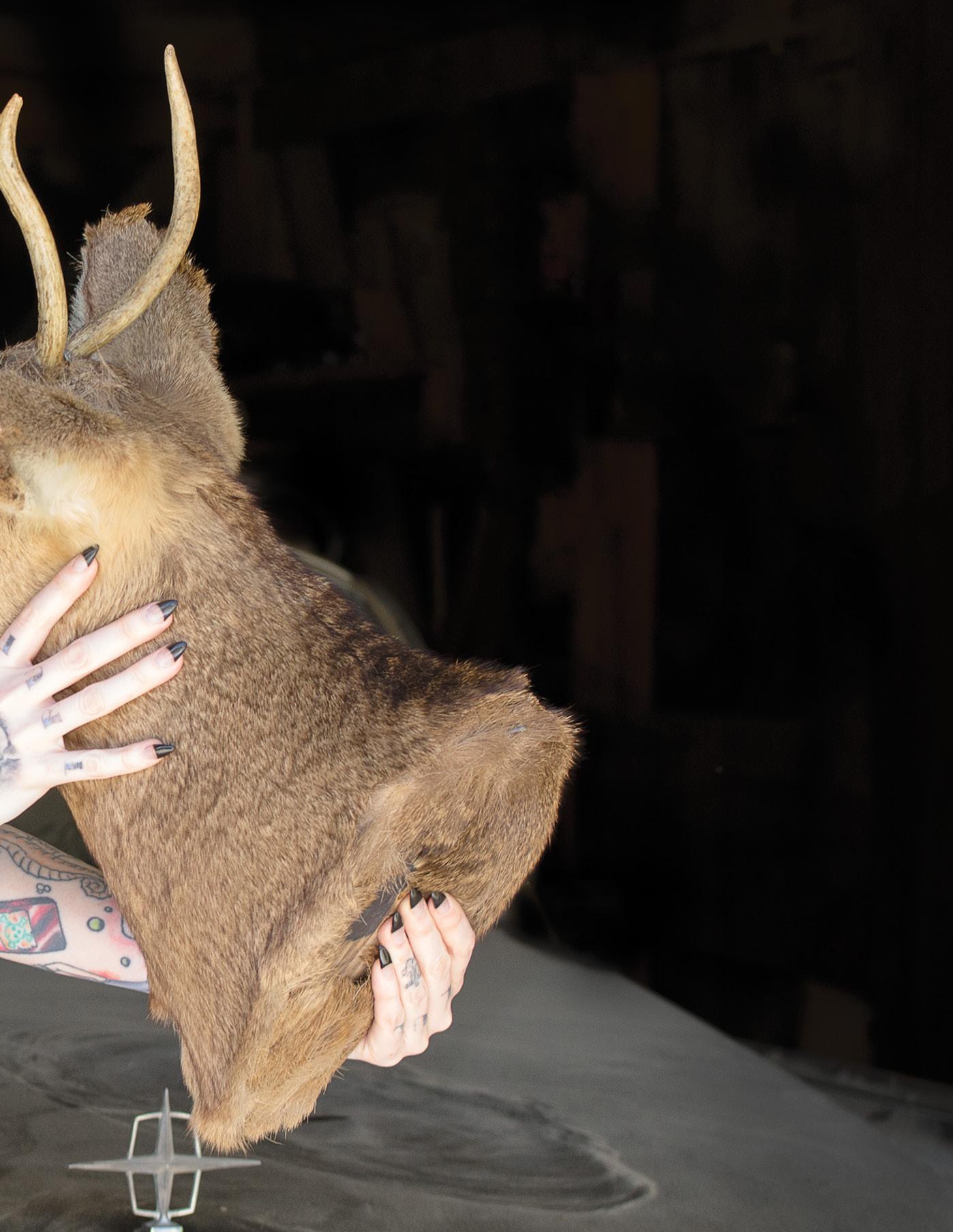
Wearing a retro floral pin-up dress and a silver necklace with a mink vertebrae pendant, both of which she made herself, Connie Lail-Preciado saunters into the room with ladylike charm. A selfdescribed cross between “Leave it to Beaver” and “Elvira,” she fuses classy with creepy. Though dainty in demeanor, she is also tough and tatted up. It looks as if the pattern jumped off of her dress onto her pale skin.
“Ever since I was about 14, I started wanting to get my entire body tattooed,” Lail-Preciado says. “My left arm is mainly dedications and things for my family. I have movie monsters, sideshow attractions and on my back, from the top of my neck to my tailbone, I have Annie Oakley on her horse.”
She has plans to be fully covered in the next three years or so.
Always a creative, Lail-Preciado started selling her crafts in high school, where she would make hair bows and clips for her classmates.
After graduating early, she went to the Fashion Institute of Design and Merchandising (FIDM) in Los Angeles.
“I went through the whole college phase where you are living off of Top Ramen for a long time. I went to fashion school and poured all my money into that,” she said.
Lail-Preciado later realized that making fashion for the mainstream wasn’t for her.
“I make a lot of really odd things,” Lail-Preciado says. “I make most of my own clothes, and clothes for my kids. I love to make 1940’s lingerie, that’s probably my favorite style and era.”
With a wide range of interests, including fashion design, furniture restoration, collecting vintage pieces and all things macabre, Lail-Preciado decided to combine her passions into a new art form to focus ontaxidermy.

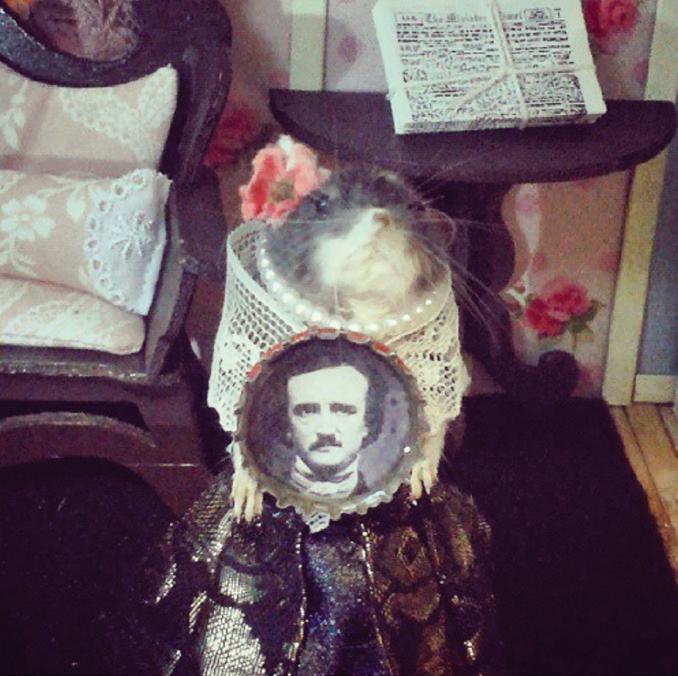
“I have to tie everything that I love and know into one, so that I can have fun while I’m working at the same time,” she says.
Like many of her hobbies, Lail-Preciado got into taxidermy because she really liked the idea of owning some pieces of her own, but couldn’t bear to spend a lot of money on it.
“I am an estate sale rat. I go to estate sales pretty much every weekend, and I noticed a lot of really big pieces of taxidermy that I loved but couldn’t afford,” she says. “I’d buy some here and there, but realized that it would be a lot better if I knew how to do it myself, and if I knew where it was coming from.”
Lail-Preciado’s taxidermy is distinct and focuses on anthropomorphic style.
“People joke around and say it looks like the taxidermy in [the movie] “Dinner for Schmucks” because I dress them up as people and do funky stuff,” she says. “I like to bring to life the beauty that the animal had when it was still alive, and at the same time mix it in with human things.”
Lail-Preciado has been practicing taxidermy for three years. According to Vice Magazine, alternative taxidermy is femaledominated, and there tends to be about an 80/20 female to male ratio in classes.
“I started learning things online, and then took a class at the Bearded Lady to learn small taxidermy,” she says.

The Bearded Lady is a vintage and oddities shop in Burbank owned by Erick Yaro Wessel and Kyrsten Akikio Bailey. In business for three years, the shop specializes in things of odd nature, and sells everything from ethically sourced taxidermy, to Ouija boards and medical equipment. They also offer taxidermy classes about once a month, which is where Connie learned her craft.
“I met Connie through the shop,” Wessel says. “I remember her taking classes, and she frequents the store. We always talk and have full half hour conversations every time she is in.”
Lail-Preciado is currently working on several projects, including the restoration of a 1950’s travel trailer, where she plans to store her designs. She is also using her carpentry skills to refinish furniture to fill the trailer.
Another piece she is working on is a broken radio cabinet. She gutted it, refinished
it, and is now making a taxidermy scene within it that features a rat laying across a chaise lounge that was originally used in a vintage dollhouse.
Many of her creations serve as functional decorative pieces, rigged with lights in certain areas of the scene.
Lail-Preciado focuses on humanely sourced taxidermy.
“I don’t kill anything,” she says. “I don’t even eat meat. I have friends that hunt, and they constantly ask if I want any pieces they killed recently. I have to explain to everybody that I don’t want to kill anything, I just want anything that has died naturally so I can bring it back to life.”
She finds pieces of animals, dries them and boils the bones. She also goes to feed stores in Sylmar where they give her the rodent runts that are already dead.
“They just put their hand through and whatever is not moving, they check to make sure they’re dead, and then they let me have them. I throw them in a freezer for a couple of days, and then I work on them,” LailPreciado says.

Always looking to learn more, LailPreciado uses books and online resources to enhance her knowledge.
“There are certain things, like popping the skulls out of some animals, that are really hard. I wasn’t really sure how not to damage their faces, and Youtube videos have helped,” she says.
Though some may find it graphic, it’s all part of the art form.
“Everyone’s a little uneasy and scared when they start, but then they realize it’s science,” Bailey of the Bearded Lady says. “Once you see past what you’re actually doing, you realize it’s a way of appreciating it and giving it life again.”
Like an artist picking their color scheme, Lail-Preciado selects certain carcasses based on fur color and pattern.
“I try to make each piece different. When I go in and look for the rats, I am always hoping for certain color combinations,” she says. “Once I’m done and have positioned them the way that I want them, just thinking about what little outfit I’m going to stick them in is a lot of fun.”
According to Lail-Preciado, working on birds is difficult. She only acquires chicks and ducklings.
“You have to remove the brain and put the skull back in, and then create your own brain out of molding clay,” she says. It’s very challenging not tearing their faces.”
“I’ve been around death a lot in my life. A lot of people close to me have died, and I just kind of got to the point where it was normal,” she says.
She has worked in veterinary offices and volunteered in shelters, so animal death is nothing new to her.
“For me, even in movies, I feel like it’s a lot sadder when an animal dies than when a human does, which is really sad,” she says.
“I studied mortuary science for a while because I wanted to be a mortician, but having about 70 percent of my body tattooed, I realized that I wouldn’t really be accepted in that industry. After studying that, death doesn’t really bother me anymore. I don’t have a death wish or anything, but it doesn’t really bother me,” Lail-Preciado says with a laugh.
Lail-Preciado’s home is a reflection of her craft. “My house looks like a cross between a hoarders house and an antique store, with 1920’s things everywhere,” she says.
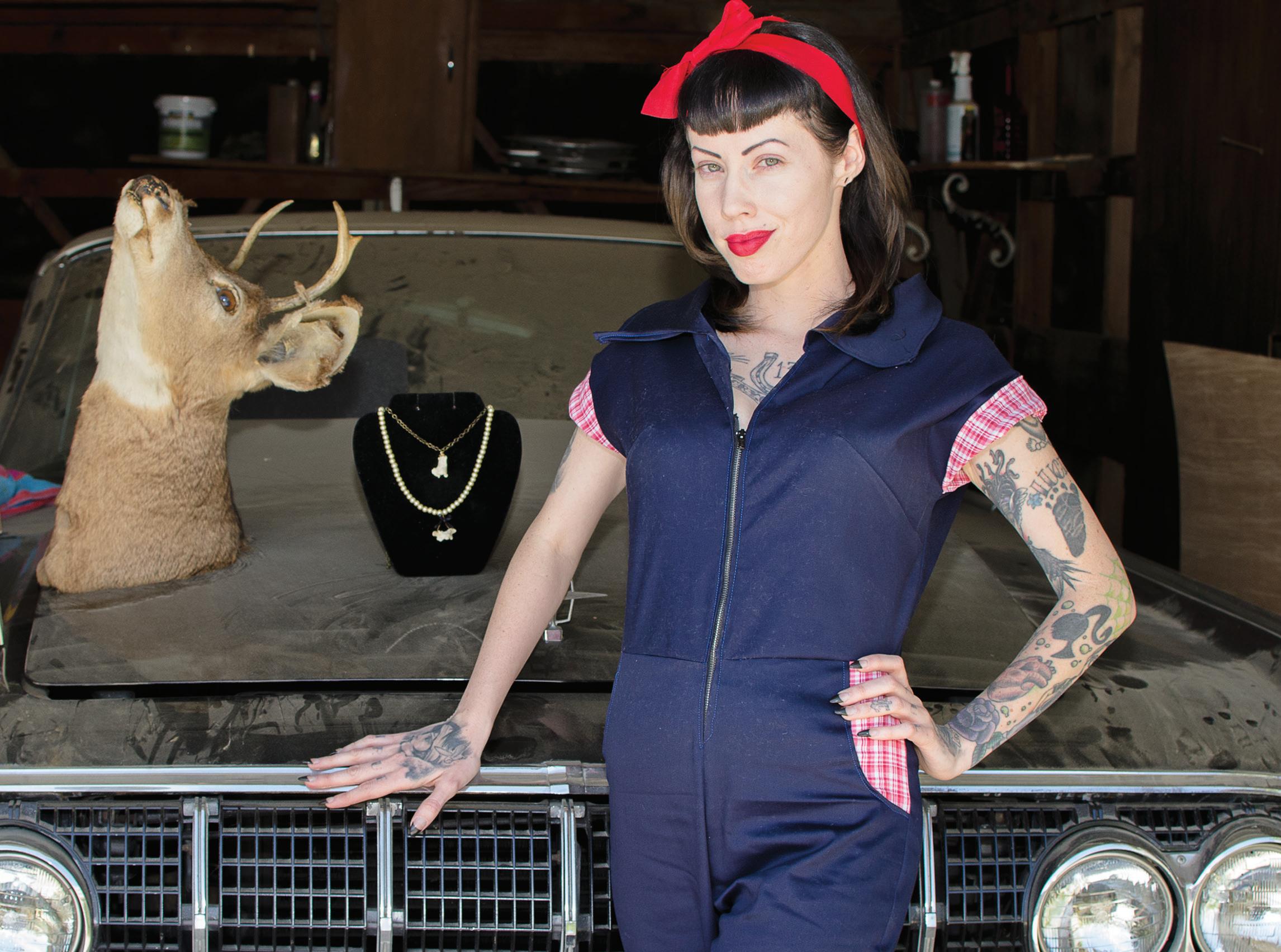
Not your typical “stuffed animals,” LailPreciado says her 7-year-old daughter tries to play with the pieces she has preserved.
“She thinks they’re cute. They’re disinfected and everything so they don’t have any funky smells, and they’re all dressed up. I’ve built her a few dollhouses and dollhouse furniture so she tries to take them, and I’ve caught her twice playing with them,” she says.
Lail-Preciado works three nights a week
“I’d say my entire paycheck goes back into the store, buying fabrics and materials because they have almost everything that I need there,” she says.
Adding to her range of talents, LailPreciado also enjoys performing on stage.
“I do really weird gory burlesque as Connie Munster,” she says. “ My dad is actually the one who gave me that name because the Munsters have the one niece Marilyn that’s normal and everyone else is weird. In our family, I was the weird one and everyone else was normal so my dad called me Connie Munster.”
Focusing more on simulated nudity, her burlesque is less sexy and more gory. Wearing costumes she designed herself, she splatters fake blood on the crowd, and pretends to rip out her organs while performing.
“Weird, macabre, that’s my thing right there,” she says.
Taxidermist Connie LailPreciado poses with some examples of her work in Lancaster, Calif. at Jo-Ann Fabrics in Porter Ranch.“I like to bring to life the beauty that the animal had when it was still alive...”
-Connie Lail-Preciado
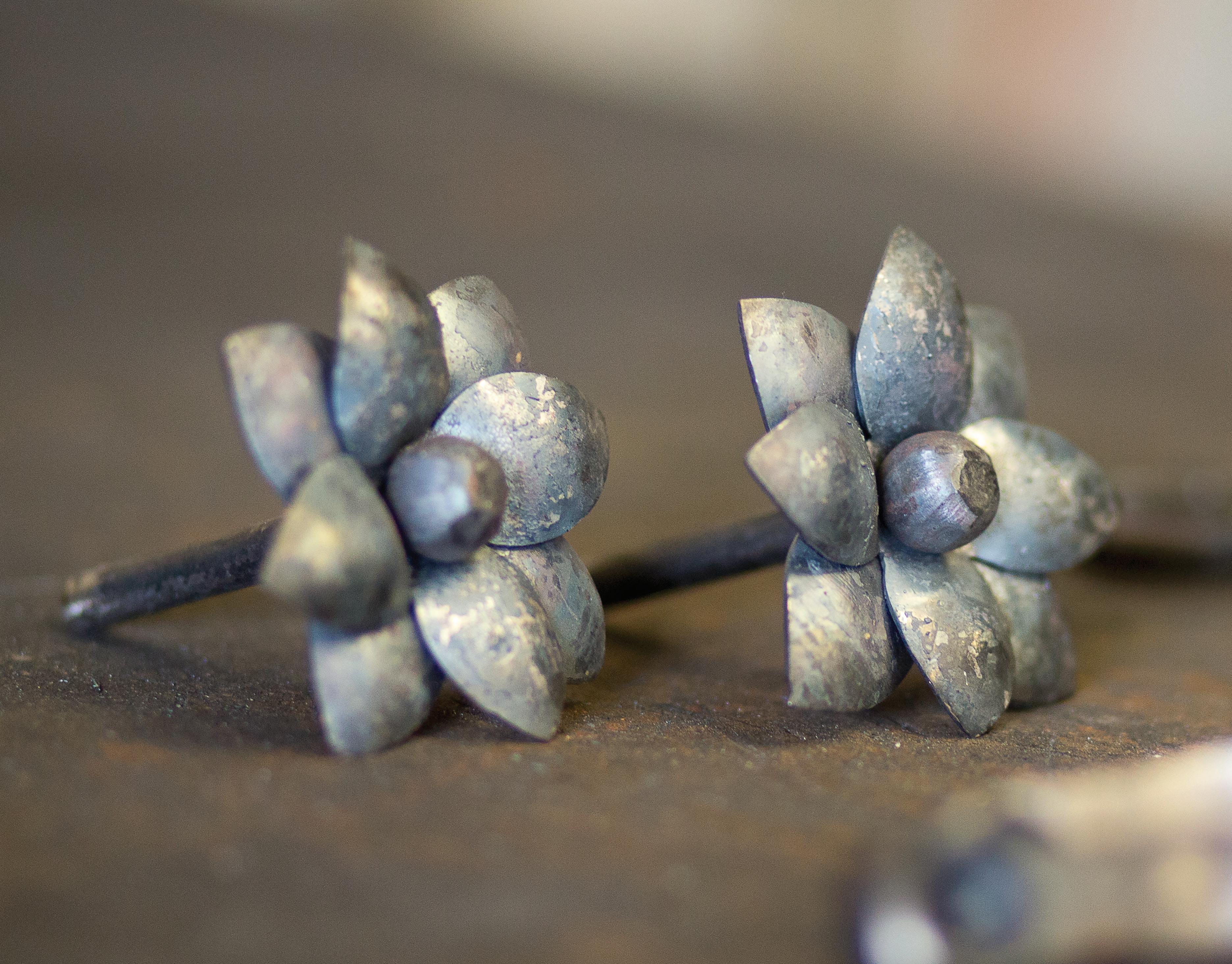
The hot orange glow of the metal grows brighter by the minute. As soon as it reaches a pale yellow, the iron is ripped from fire and beat into submission. When the scorching metal takes the desired shape, the still-glowing rod is dunked into water, hardening the sizzling material in a cloud of steam.

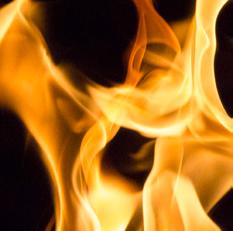

Born in Louisville, Kentucky, Phillip Bowling is the owner of Noble Forge in North Hollywood, California. He started with an apprenticeship as a broil maker at DWP Powerhouse, welding tubes, pipes and other metals. While working at the DWP, the Tennessee Valley Authority (TVA) had blacksmiths that would make wedges and other tools. This is when Bowling first became interested in blacksmithing. But he didn’t start to “hit on the anvil” until he moved to the San Fernando Valley. Once in North Hollywood, Bowling says he was learning by the seat of his pants. At the time, he also began to

attend a metal working seminar, demonstrated by the Orange County Blacksmith Association.
Many people lump all types of metal work together. Bowling is proud of the trade he took so long to learn, and he wants it to be respected as its own art form.
Claudia Martinez is a welding student in Glendale, California. She, like Bowling, emphasizes the distinction between the different types of metal work.
“Blacksmithing is not the same as welding. It’s much much harder,” said Claudia Martinez, a Glendale welding student.
Bowling has been professionally blacksmithing for 20 years, since he moved from Kentucky to North Hollywood, California, in 1996. Bowling is mostly self-taught, except for a few seminars he attended in the San Fernando Valley. He creates fireplace screens, iron sculptures and railings for stair cases, in which Bowling makes a house call to get the right measurements of the stairs, but
“Every single piece that I create is time consuming and difficult. Trying to move a force that does not want to be moved.”
-Phillip Bowling
Top: Phillip Bowling shapes a heated piece of iron for a project that he is designing for a client, at Nobel Forge wearhouse in North Hollywood, Calif. on March 22, 2016


Bottom: Bowling uses this machine to pound and help shape the meal at Nobel Forge wearhouse in North Hollywood, Calif on March 22, 2016
he himself does not install the railings.
The process of completing a piece is time consuming. Bowling says that it can take anywhere from a few months to two years.
Sometimes the metal will fight you the whole time, from not fitting up, to not matching up, to the metal not looking like the drawings, according to Bowling. Sometimes, what looks good on paper will not look good on metal, making it much harder to create pieces in a timely manner. But sometimes, things get easy. Some pieces that look elaborate are fairly easy to create, but sometimes pieces that look easy to make are difficult to create.
When working for a client, the process can take a bit longer. When designing and drawing up the prints for a piece, he may need to send, and re-design several proofs before he can even began to work with metal. After finalizing the design, Bowling can finally begin crafting the piece.
More than 1,000 degrees later, the metal becomes workable. It becomes more like plastic, but once the metal
Opposite Page Top: Some metal flowers used as adornments on larger pieces sit in Nobel Forge wearhouse in North Hollywood, Calif on March 22, 2016
Opposite Page Bottom: A piece of iron gets heated up before it gets worked on at the Nobel Forge wearhouse in North Hollywood, Calif on March 22, 2016
cools it becomes immovable again, taking its final form.
Bowling’s clientele varies. Sometimes he gets repeat customers, but he also gets one time customers, mostly during the Christmas season. He has shipped his pieces all over the county, to people from all walks of life, but most of his clients are from Los Angeles. Each client, regardless of circumstance, receives a completely custom made piece of art.
“The more people know about blacksmithing and other hand crafts the better it is for all of us,” says Heather McLarty, president of Adam’s Forge, a Blacksmithing school located in Los Angeles.
Noble Forge has been featured in several magazines. including Architectural Digest, The Anvil’s Ring, Today2 and Ironworks. Bowling has also been featured in the Pasadena Showcase House of Design for several years.
Bowling plans on staying in Los Angeles and keeping his shop open, until he can no longer do the job that loves.
Sources:
1 http://news.discovery.com/space/astronomy/moon-earth-wobbletides-nemesis-130726.htm
2 http://www.clarkvision.com/imagedetail/eye-resolution.html
3 http://www.scientificamerican.com/article/music-therapy-heart-cardiovascular/
4 http://discovermagazine.com/2006/sep/10-20thingsdeath
5 http://www.pnas.org/content/99/16/10237.full
Sources:
6 https://www.nytimes.com/books/97/06/15/reviews/970615.mallon. html
7 http://www.nytimes.com/2012/05/31/science/the-tomato-ripe-juicyand-bursting-with-genes.html?_r=2&ref=science
8 http://www.lesaviezvous.net/nature-en/potatoes-have-more-chromosomes-than-humans.html
9 http://articles.baltimoresun.com/1998-10-25/features/1998298006_1_gogh-red-vineyard-painting
10 http://cellregenerationjournal.biomedcentral.com/articles/10.1186/2045-9769-2-6
The moon is getting farther away from Earth at a rate of 1.48 inches a year.1
If the human eye was a digital camera it would be would be equal to 576 megapixels.2
The enzymes that help you digest your food will begin to digest you within three days of your death.4
Your heartbeat can change with the music you listen to, and even mimic tempo.3
20% of the oxygen and blood in your body is used by your brain.5
After suffering a stroke, Jean-Dominique Bauby, editor in chief of Elle magazine, was left paralyzed, only able to blink his left eye. A rearranged alphabet beginning with more frequently used letters was shown to Bauby, and he would blink when the desired letter was reached. In this way, Bauby dictated his book “The Diving Bell and the Butterfly. It took Bauby 200,000 blinks to complete his book.6
have more genes than7
Humans
Tomatoes Potatoes.8
Vincent Van Gogh created more than 2,000 pieces of work, but there are only two confirmed sales of paintings in his lifetime. A self portrait in 1888 sold to London art dealers, and the more well known “The Red Vineyard,” which sold in 1888 for 400 Belgian francs. That would be about $1,800 today. In 1990 van Gogh’s “Portrait of Dr. Gachet” sold for $82.5 million.9
Scientists in China have been able to grow teeth using stem cells obtained from urine. Don’t forget to brush!10
Two women, two artists, from two different countries share one common voice.
A voice against injustice and inequality, a voice against sexual assault and domestic violence, a voice, “Louder Than Words.”
Sexual assault is rooted in history. When a land army was victorious, the women were captured and raped. This problem has never disappeared, however, in times of peace, they were not the victorious troop, but their partners, or the men who they knew.
Domestic violence and sexual assault is not limited to a specific country or culture or a particular group of society. The issue is a global phenomenon. According to WHO (World Health Organization) 35.6 percent of women around the world experienced either sexual or physical abuse.
“Louder Than Words,” “A Window Between Words,” and “I Can You Can” are projects addressing domestic violence and sexual assault. These projects are the result of collaboration between two socially engaged
artists, Neda Moridpour and S.A. Bachman. The most recent project produced by the two artists is “Crystal Clear,” a gallery exhibition, round table discussion, performance, and video projection at the Glendale Community College Art Gallery from Feb. 25 to March 30, 2016.
At the gallery an animated hand attracts visitors’ attention. The patterned red wallpaper lining one wall looks nice at the first sight, but upon deeper inspection the viewer can see it’s made up of abusive instruments such as fists, guns, knives and belts.
“Why do Women Stay?” is a 4’x8’ quilt spread out on a table that features some examples of why women stay, attached to the quilt. Guests can share their experiences by writting on a piece of cloth and pinning it to the quilt.
The stories decorating the quilt were described as, “There are only patterns, patterns, patterns hidden in patterns.”
On the wall at the right side spectators could view blind embossed intaglio related to
the stories of survivors. “My father raped me every week from the time I was 8-17 years old. He was also physically abusive; He required us to remove our clothes before beatings us with sticks, straps and electrical cords.”
The Peace Over Violence and Denim Day organizations collaborate for the project. The Art Department encourages the professors and students to attend the exhibition. “Powerful, moving,” said Melissa R. Rendel co-chair of Theater department of GCC.
Neda Moridpour, a socially engaged artist and educator, is a co-founder of “Louder Than Words,” “Window between Worlds” and “I can you can” also she’s founding director of [P] Art collective. One of her projects, called Aunti Roach, focuses on the Iranian folk literature as it relates to violence against women in Iran. Moridpour combines art and activism for her project. She is a survivor of sexual abuse and violence who raised her voice to bring attention to gender discrimination,
violence and inequality. She was born and raised in Iran, finished her master’s in computer science, moved to the United State in 2009 and decided to have her voice heard through her art.
“I will use the gallery as an intervention and an open space for the community in
Left: Founders of the “Louder Than Words” project, S.A. Bachman and Neda Moridpour, talk with attendees at the “Crystal Clear” exhitbit in the Glendale Community College Art Gallery in Glendale, Calif. on Feb. 25. 2016.
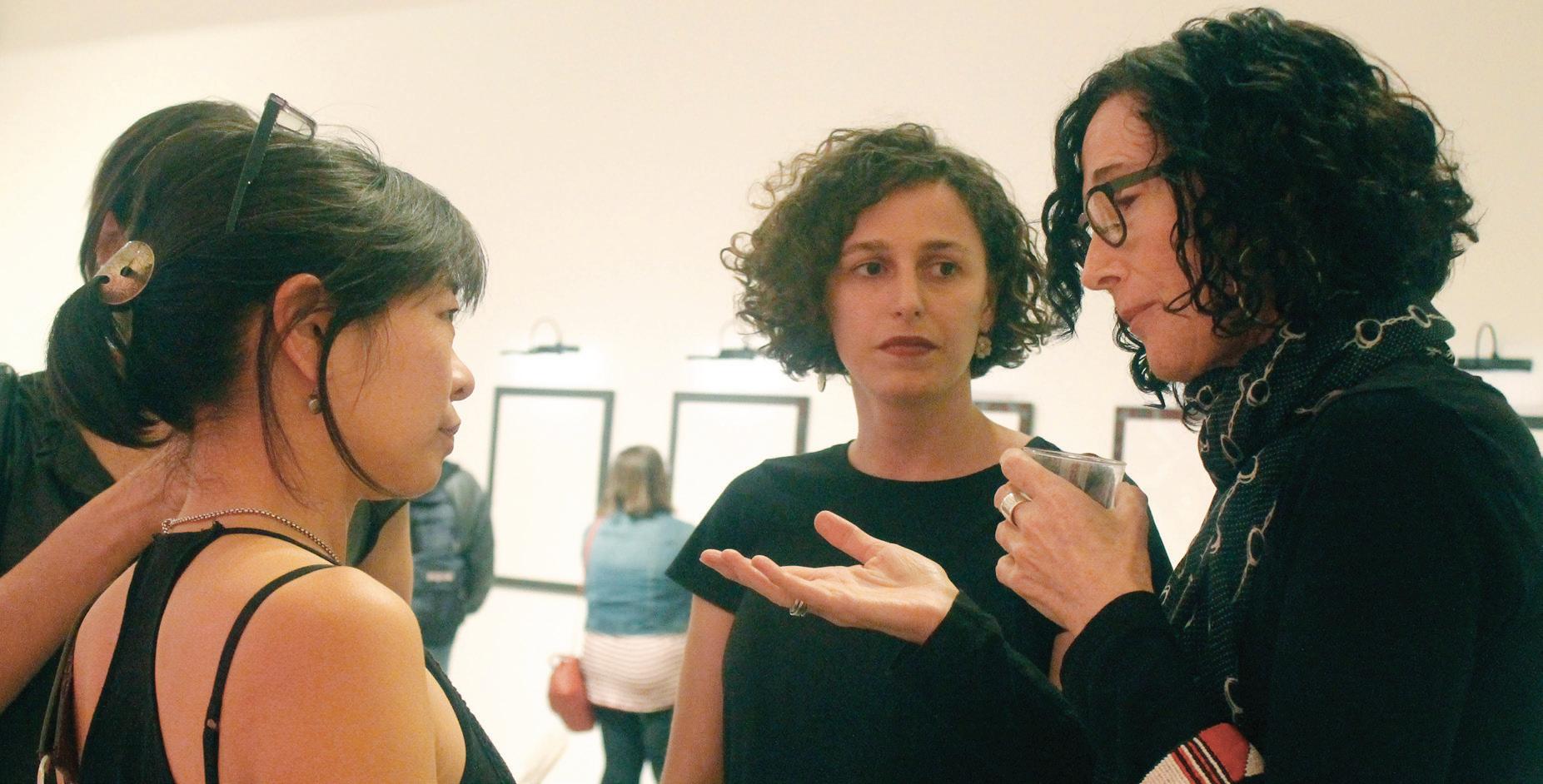
Below: The quilt on display at the “Crystal Clear” exhibit. The quilt contains phrases and images related to domestic violence.

order to dissolve the boundaries between individual and collective, passive and active, author and viewer, art and life.” she says.
Mordipour engaged 26,000 people around the world with her projects. Her exhibitions have taken place in Iran, China and the United States.
Bachman also is a socially engaged artist, educator and co-founder of the artists-activist collaborates: “Think Again” and “Louder Than Words.” Bachman was a senior lecturer at the School of the Museum of Fine Arts, Boston, from 19912011, and is currently a senior lecturer at the Otis College of Art and Design, Los Angeles.
“Both the collectives that I was a part of, “Louder Than Words” and “Think Again” have been very much about changing that history. In both cases our commitment was to use our art to broaden ideas about what we can be... Always socially engaged, and using one creative praxis toward social justice.”
“I will use the gallery as an intervention and an open space for the community in order to dissolve the boundaries between individual and collective, passive and active, author and viewer, art and life.”
-Neda Mordipour
 Story and Photos by Titus Littlejohn
Story and Photos by Titus Littlejohn
Amid the background of a seemingly sleepy suburb in Bakersfield, California, musical magic is made. Here in an unassuming home Rocketship Recording Studio produces audio treats.
In the dimly lit recesses of a cave-like studio, sweet sounds waft through the space, light and airy like the scent of fresh baked goods. The vibe quickly shifts, this time something of a more nostalgic nature, a throwback jam.
These are the creations of Music Producer Kris Holland. Although his Bakersfield studio has only been in operation for three years, Holland has been
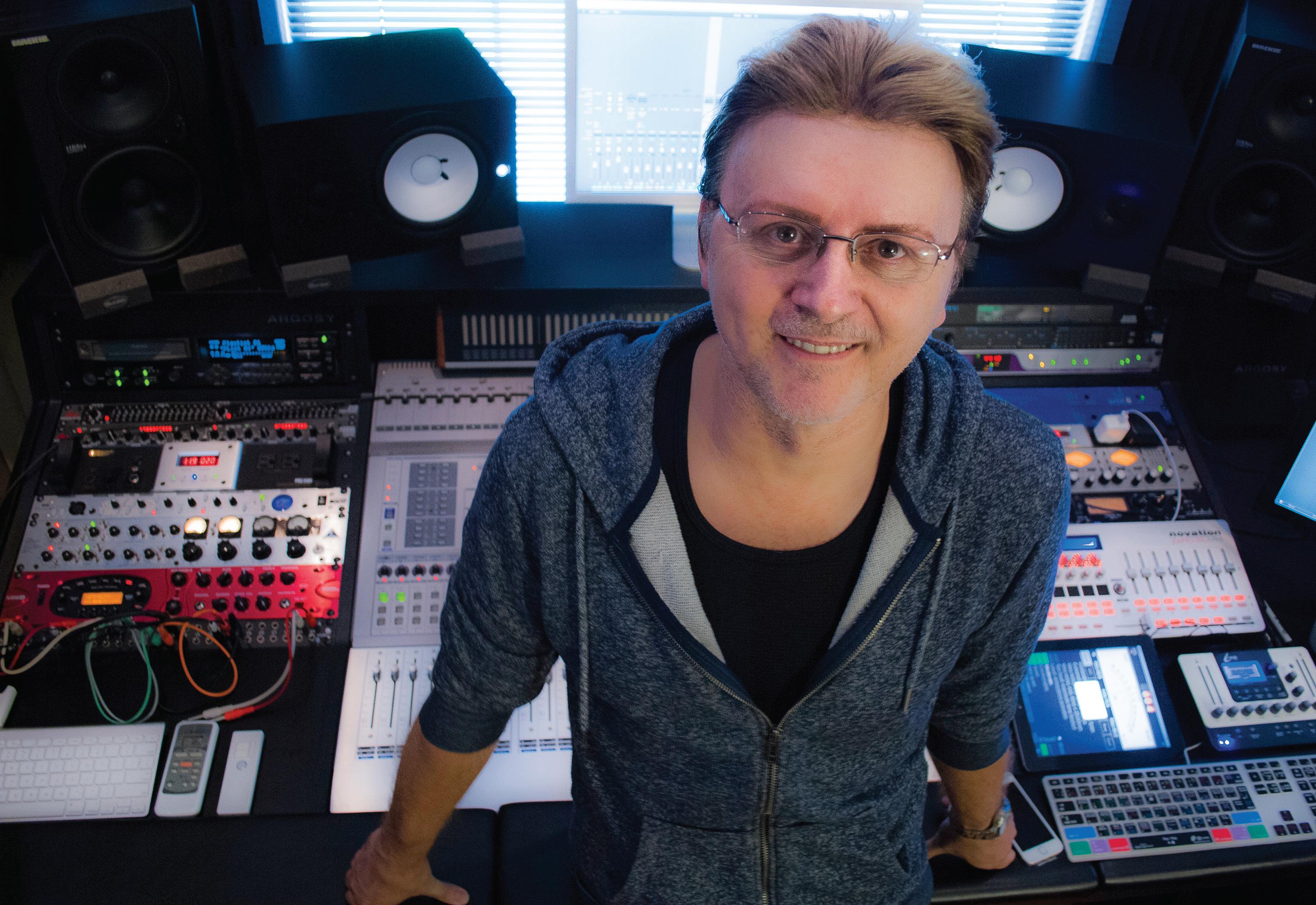
manipulating melodies since he was a boy in the UK. In his musical laboratory, the music maven toils endlessly to concoct the perfect sound, a virtual conductor of sorts, leading a symphony of LED clad keys and nobs.
Holland has a diverse repertoire of tracks under his belt, but his first love is creating synth driven electronica. Ever since receiving his first record of the 1970’s German electro band Kraftwerk, which inspired him to save enough coin to purchase his first keyboard.
Operating a recording studio in a small town setting may come with its challenges, but Kris Holland has left his mark.

 Above: Kris Holland stands in front of his musical command center Bakersfield Calif.
Far Left: Kris Holland demonstrating his composing skills on one of his many boards in Bakersfield Calif. April 13, 2016.
Left: The reel to reel recorder Kris Holland’s parents gifted him in support of his musical career. Bakersfield Calif.
Above: Kris Holland stands in front of his musical command center Bakersfield Calif.
Far Left: Kris Holland demonstrating his composing skills on one of his many boards in Bakersfield Calif. April 13, 2016.
Left: The reel to reel recorder Kris Holland’s parents gifted him in support of his musical career. Bakersfield Calif.
Leading
 Story by Ethan Roman
Photos by Joshua Duarte and Skylar Lester
Story by Ethan Roman
Photos by Joshua Duarte and Skylar Lester
Tucked away in a cramped garage in Calabasas, California, monsters are created. The smell of burnt fuel and melted metal stains the atmosphere. The monsters that leave this space are flame-spitting, ear-splitting, sensorypolarizing devil’s chariots.
Corbin Goodwin, a 25-year-old mechanical engineering major at CSUN, gained notoriety when his first mad creation was featured on the /Drive Channel on YouTube. His creation, dubbed the “Zero fucks given RX-7,” turned the automotive world on its head.

Goodwin took a motley 1984 Mazda RX-7 he pulled from a ditch and made every performance modification possible, seemingly at the expense of all aesthetic value. The car rubbed every car fan like sandpaper in just the right way. Ugly was cool. Scary was cool. Dangerous was cool. Goodwin’s RX-7 reignited the car-world’s love affair with the hot rod.
“Everything I do is driven by function. I don’t want to be defined and constrained to cars. I feel like it pigeonholes you really badly to let one thing determine yourself,” says Goodwin. “I’m not here just for show.”
Corbin Goodwin, 25, poses on top of his 1979 Rolls Royce Silver Shadow II at the top of Corral Canyon in Malibu, Calif. Photo by Skylar LesterA hot rod is a strange beast. Editor in Chief of Hot Rod Magazine, David Freiburger once speculated on an important distinction between hot rods, and the chrome-clad trailer queens known as customs. Freiburger said, “customs are for attracting girls, while hot rods are for scaring them away.”
Pierce College Automotive Department Chair Tom Fortune sees the changing tides of hot-rodding, first-hand.


“It’s generational. What I liked as a young man is different from what my father liked as a young man. Most people stick with cars they remember from their youth. When young people are building cars, they usually look the same, which is kind of bad. They do what they can afford. When I was young, the ‘50s and ‘60s cars people were customizing, didn’t look like they do today. People that can afford those cars today have a lot of money in them, so they look even better than they did when they were new. Someday, that’ll happen to the cars they hot rod these days,” Fortune says.
A hot rod is an all-out assault on the senses. They’re fast, loud, dangerous and an ultimate expression of the person who created it. Goodwin’s creations are anti-establishment, anti-traditionalist, anti-cars. They make you question what a car has to be. To most people, a car is a tool to move you from one place to another. A hot rod is certainly for no such things. There is little certainty that you will ever make it to an ultimate destination at all, let alone in any sort of comfort. You don’t drive a hot rod
to physically move yourself; you drive one to emotionally move yourself. In such, they are precisely engineered, flame-spitting works of art. Rolling abstract paintings.
Goodwin, an eccentric type, has owned 16 different cars at his young age. Many of his cars were anointed with personal Corbin-isms. His RX-7, however, was his first venture into the highly-modified world.
According to Goodwin, it was an exercise in self discipline. He wanted to prove to himself he could build something worth taking a breath for.
Goodwin has received plenty of positive encouragement from people all over the world. However, his RX-7 and subsequent builds have not been for internet glory, but for his own enjoyment.
Following the success of his RX-7
build, Goodwin immediately began planning his next creation, a 1979 Rolls Royce Silver Shadow II, to turn into the ultimate juxtapositioning drift car. His theory; take everything that makes a Rolls Royce a Rolls Royce, and throw it all away. This was a massive undertaking, and several years later, the project is finally reaching completion. Bespoke british parts and impossibly complicated vacuum lines prolonged the project. At one point, with school and job stress closing in, Goodwin became dejected with the project and turned his attention elsewhere.
Goodwin met David Salin, 24, while working at Amici’s Pizza on Topanga Canyon, Woodland Hills. Goodwin noted that Salin was down on his luck, and realized just what he needed to cheer up. Cut his car in half. Goodwin and Salin began the surprisingly unlaborious task of cutting the back end off of Salin’s 1998 Volkswagen Jetta diesel, curiously replacing the rear tires with space-saver spares and widening the front tires.
“The point of the car was to be a utilitarian vehicle. You can’t buy a truck that gets 50 mpg. It was more utilitarian than the joke people thought it was,” Salin says.
The creation was dubbed “The Jettamino” by the duo. The name being a combination of “Jetta” and “El Camino,” which the car now resembled.
“I Googled the Jettamino, and people were commenting how I’m just an exhibitionist,” Goodwin says.
“Very few people understood the build. [Corbin and I] refer to these people as muggles. They don’t know about the car world.
Above: Corbin Goodwin reassembles the rear differential on his 1979 Rolls Royce Sliver Shadow II in Calabasas, Calif.Those people were like, ‘What the fuck is this?’ but overall, people usually liked it. They always asked why? The answer was why not,” Salin says. “The point of getting the Jetta diesel was to be an economical daily car, but it got boring pretty quick, so I did a bunch of mods to it.”
The Jettamino received notoriety on a smaller scale than the “Zero Fucks Given RX-7,” but nevertheless, reignited Goodwin’s drive to finish the Rolls Royce. Soon to be officially reviewed by the /Drive Channel, the Rolls Royce, which still feintly resembles a work of the famous British mark, is perhaps Goodwin’s craziest creation yet.
“The Jetta was a very conscience dig at the VW scene. That’s what I’m doing now with the Rolls. There’s a very angry side of me that’s building this to say screw you to a lot of different people,” Goodwin says. “The RX7 was just proving to myself that I can make something. The Rolls is just a question of can I do it myself. Can the second album follow the first?”
Goodwin retained the Rolls’ 6.75 liter V8 and stuck the largest turbo he could fit on it. It turns out, the largest turbo he can fit on it doesn’t actually fit in it. As a result, the Rolls is stretched, cut, mangled and warped in every way to accommodate the vast modifications to the engine and suspension.
The car is a true Frankenstein’s monster.
The Rolls is everything a Rolls Royce shouldn’t be, and everything a hot rod should. It doesn’t have a perfect paint job or interior, but it is perfect in it’s imperfections.

“If I tried to fix those fenders and paint over them, I can guarantee that it would look tacky. I want people to take it for what it’s worth,” says Goodwin, regarding the flared fenders he hand-pulled.
The turbo Rolls flies down suburban streets, garnering looks of every kind from everyone. A car such as the turbo Rolls could never be designed. Its labyrinth of pipework and widened fenders can only be created out of necessity and ingenuity.
“If you’re living a no surprises kind of life, you’re probably never going to look at your car and decide to cut pieces off. Maybe that’s a good thing, but when in life you can create a new object, why not.”
The turbo Rolls is polarizing. It is very, very fast. It is loud enough to shake the windows of nearby houses. The turbo Rolls is a textbook hot rod. It is an exact
execution of chaos that could not be interpreted in any other way than it is.
“People get the impression I’m building the Rolls for the public, but I’m really doing it for myself, to prove something to myself,” Goodwin says.
When Goodwin is not working on his car or other projects, he enjoys perfecting his hobby of photography, and playing guitar in his band Bright Shade, which is currently in production of their first album. Goodwin has become something of an idol in the car world today. His unorthodox approach to modification is inspiring a new generation of car culture.
“Corbin is pretty influential from my point of view. I used to want a shiny car like everyone else; a WRX or something similar, but [Corbin is] all about creativity. My builds now are all about that now, too. I’m sick of the car scene now, just new cars on wheels. I think Corbin brings a lot to it,” Salin says.
“People get the impression I’m building the Rolls for the public, but I’m really doing it for myself, to prove something to myself...” -Corbin GoodwinCorbin Goodwin drives his 1979 Rolls Royce, which he dubbed the “Trolls Royce” west on Corral Canyon in Malibu, Calif. Photo by Skylar Lester
Do you have a fire burning inside?

Do you enjoy finding interesting people and sharing their stories?
Be a part of the next issue of the Bull Magazine. Go to piercemediaarts.com for more info or go to piercecollege.edu/schedules
